![]()
What are Bootstrap Capacitors?
18 September 2023
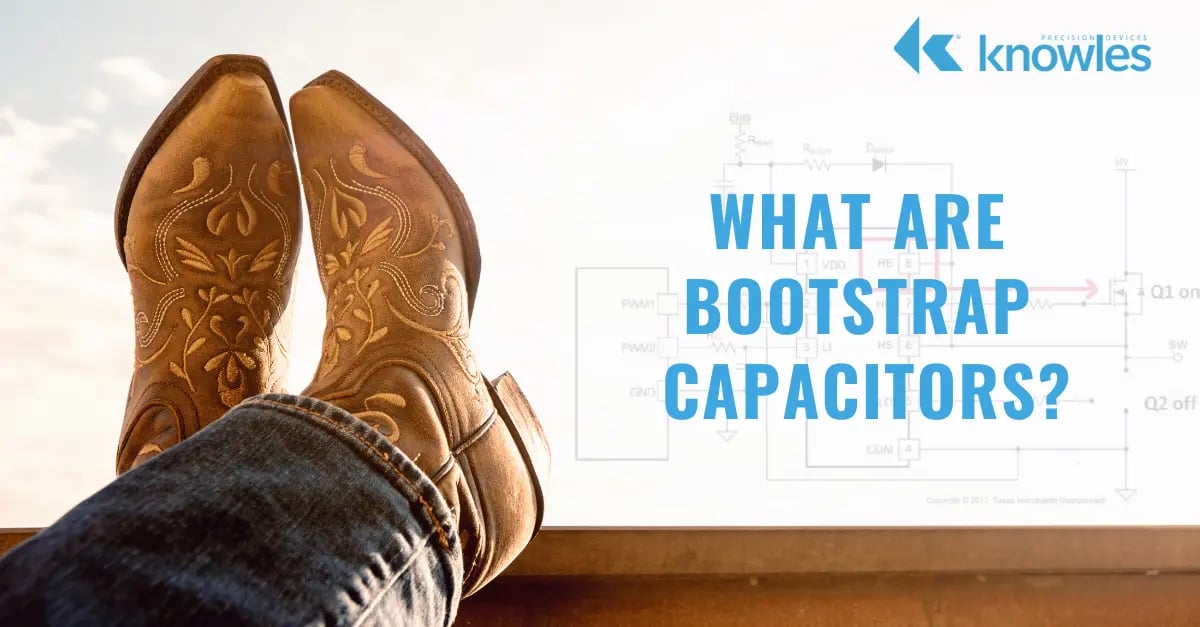
Power electronics play a critical role in converting and managing electrical energy efficiently. As electric vehicles (EVs), renewable energy systems, and consumer electronics quickly become more powerful, the demand for high-voltage power electronics is quickly increasing. This means the importance of components like bootstrap capacitors has grown significantly.
In power electronics, a bootstrap capacitor is a specific type of capacitor used to drive high-side MOSFETs efficiently. The bootstrap capacitor plays a critical role in maintaining the gate voltage required to turn on the high-side MOSFET in a half-bridge or full-bridge configuration. By using the charge stored in the bootstrap capacitor, the high-side MOSFET’s gate voltage can be boosted above the supply voltage, ensuring proper switching operation and enabling efficient power conversion (Figure 1).
#Knowles #KnowlesOfficialDistributor #BootstrapCapacitors
![]()
High Q Capacitors – Roles and Specifications
18 September 2023
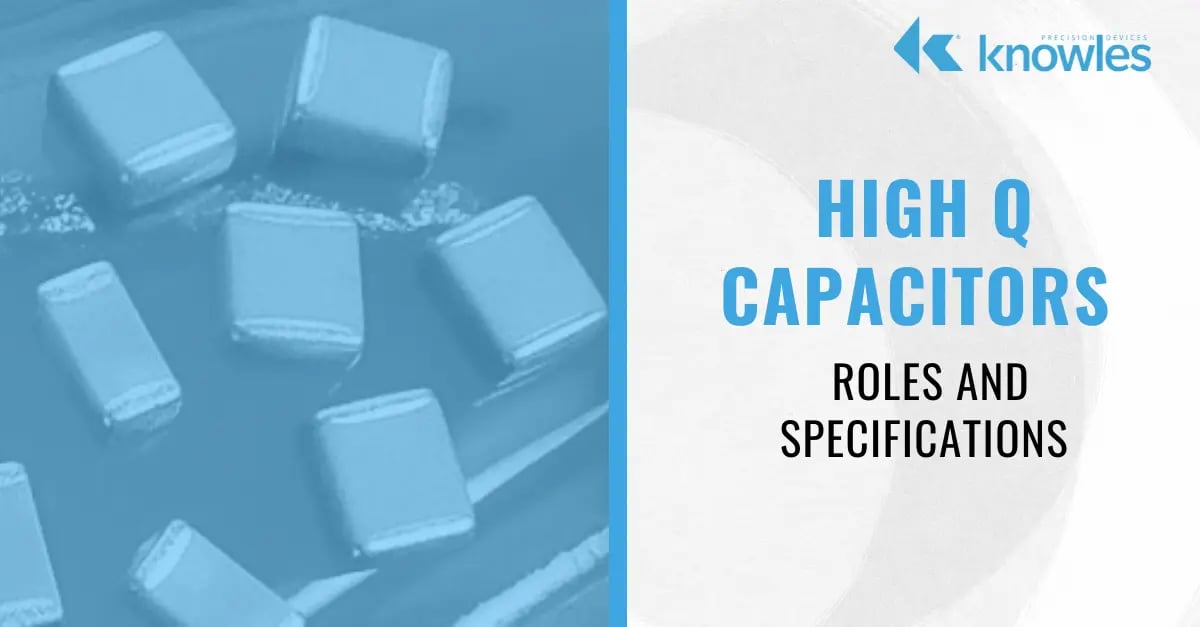
Q factor, or quality factor, is an electrical term used to describe the ratio of energy stored to energy dissipated in a capacitor at a certain frequency (you can learn more about the different components of Q factor and ways to define it here). In other words, Q factor tells us how good a capacitor is at its job at a certain frequency. A high Q value indicates low energy loss during operation, making these capacitors a good fit for applications requiring low power dissipation and high stability.
High Q capacitors are crucial components for various electronic circuits and systems due to their ability to minimize energy losses and maintain a high degree of performance.
#Knowles #KnowlesOfficialDistributor #HighQCapacitors #Roles&Specifications
![]()
The importance of DC-blocking capacitors, EMI filters explained, and the role of thin film integrated passive devices
01 September 2023
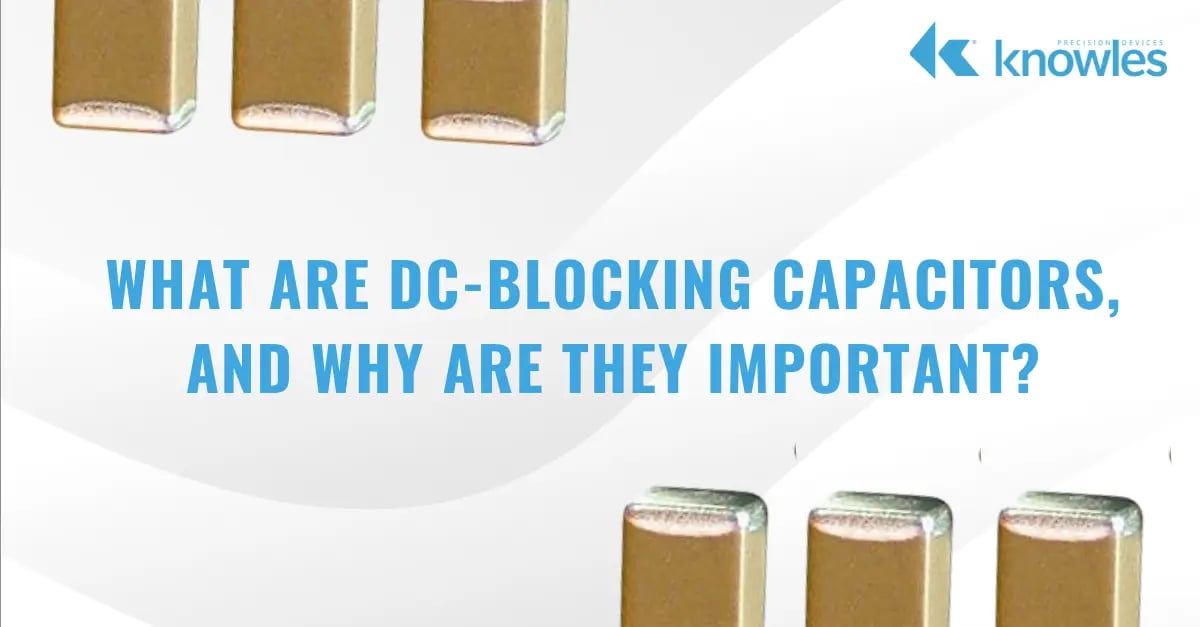
Electronic devices power our world and allow us to communicate. In all applications requiring signal integrity and accurate power amplification, blocking capacitors are used to provide clean waveforms and correctly amplified voltages.
Generally, waveform systems can be broadly defined into power-related alternating current (AC) and communications-related radio frequency (RF) applications. Both employ waveforms to provide power or information. All of these devices require a blocking capacitor to ensure the waveform conforms to the desired specifications.
#Knowles #KnowlesOfficialDistributor #DC-BlokingCapacitors #EMIFilters #PassiveDevices
![]()
Introducing the MD Series of Medical-Grade Capacitors for Implantable Device Design
01 September 2023
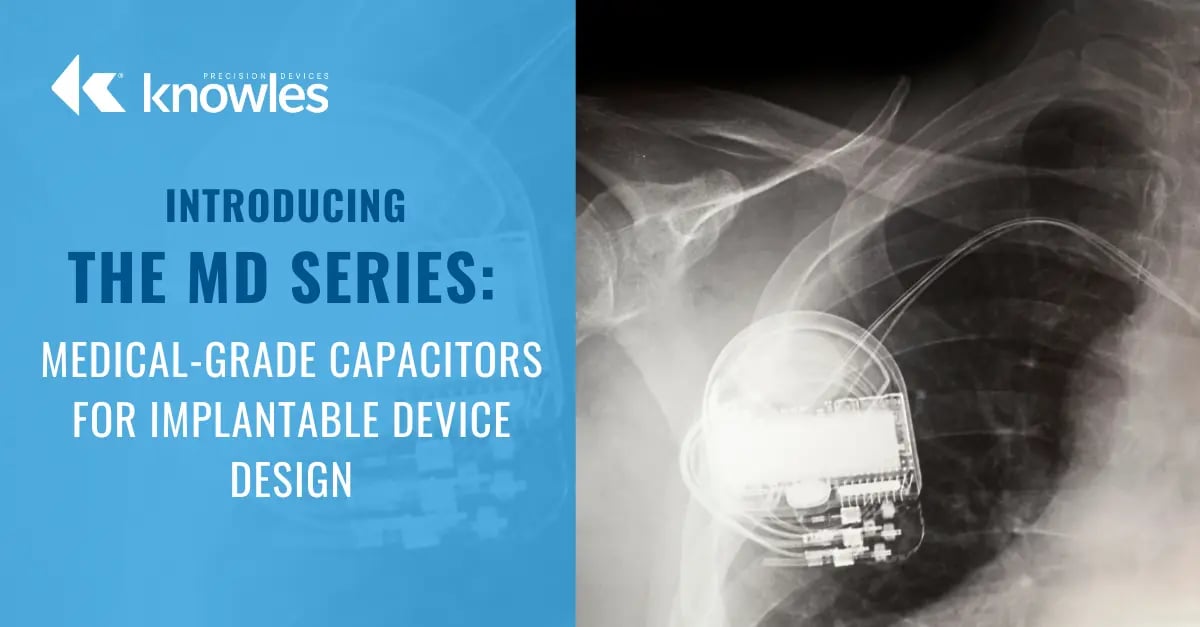
A medical device is considered “implantable” if it’s partly or totally introduced into the human body via surgery or another medical intervention, and it’s intended to stay there for a long period of time. According to the American Medical Association (AMA), approximately 10 percent of Americans will receive an implantable device during their lifetimes. To serve consistent, often life-sustaining functions, implantables require high-reliability components that guarantee long-term performance.
To achieve the reliability needed for medical implantable devices, Knowles Precision Devices offers medical-grade components. In addition to robust design techniques, Knowles offers additional screening based on two long-standing reliability specifications—MIL-PRF-55681 and MIL-PRF-123. Our components go through Group A testing for a high level of safety. The medical industry has no unique reliability specification for passive devices used in medical implantables. Designers generally rely on MIL-SPECS that have been around for decades and are accepted for defense, aerospace, military, and medical applications.
#Knowles #KnowlesOfficialDistributor #MDSeries # ImplantableDeviceDesign
![]()
What Are Decoupling Capacitors?
01 September 2023

As you likely know, capacitors are used in electronic circuits to provide local energy storage and stabilize power supply voltage. Decoupling capacitors are a specific type of capacitor used to isolate or decouple two circuits. In other words, these capacitors decouple AC signals from DC signals or vice versa. Decoupling capacitors act as a buffer, supplying clean and stable power to components, which minimizes the risks of malfunctions, noise coupling, or signal integrity issues.
Decoupling capacitors are primarily used to suppress voltage fluctuations or noise on power supply lines so that there is no impact to the operation of sensitive components. In power supplies, decoupling capacitors are strategically placed near the power pins of integrated circuits (ICs) or other sensitive components. The decoupling capacitors are connected in parallel to the power supply lines and act as a local energy reservoir that can quickly supply or absorb current as needed (Figure 1).
#Knowles #KnowlesOfficialDistributor #DCecouplingCapacitors
![]()
The Evolution of Electric Vehicle Battery Management Systems: From Passive to Active Cell Balancing
01 September 2023
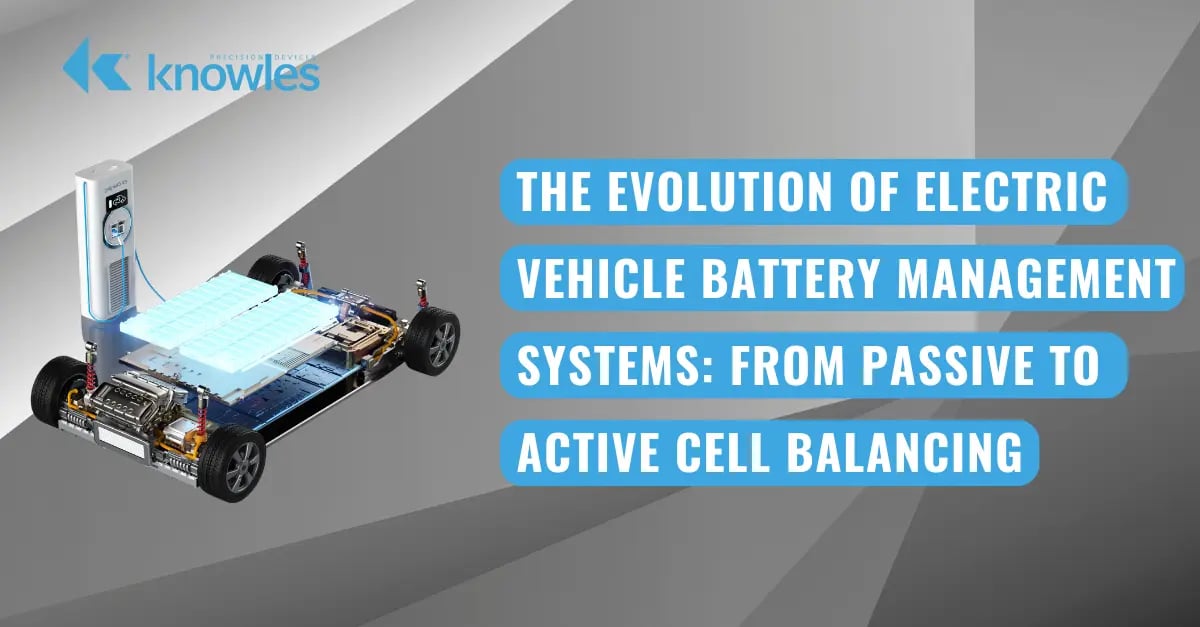
As electric vehicle (EV) manufacturers work to make batteries more affordable and easier to produce in mass quantities, we’re seeing changes in battery chemistry. For example, the industry is shifting from traditional lithium ion batteries with cobalt to lithium iron phosphate (LFP) batteries. Rare-earth metals like cobalt are in short supply, and materials like LFP are a more plentiful, sustainable, and efficient alternative.
At Knowles Precision Devices, we’re interested in trends in battery chemistry because they’re inspiring battery management system (BMS) advancements. A BMS is responsible for monitoring and controlling battery stack performance by managing temperature, performing state-of-charge (SoC) estimations, and carrying out cell balancing.
#Knowles #KnowlesOfficialDistributor # ElectricVehicleBattery # PassivetoActiveCell
![]()
The Many Jobs of a Capacitor in RF and Microwave
01 September 2023
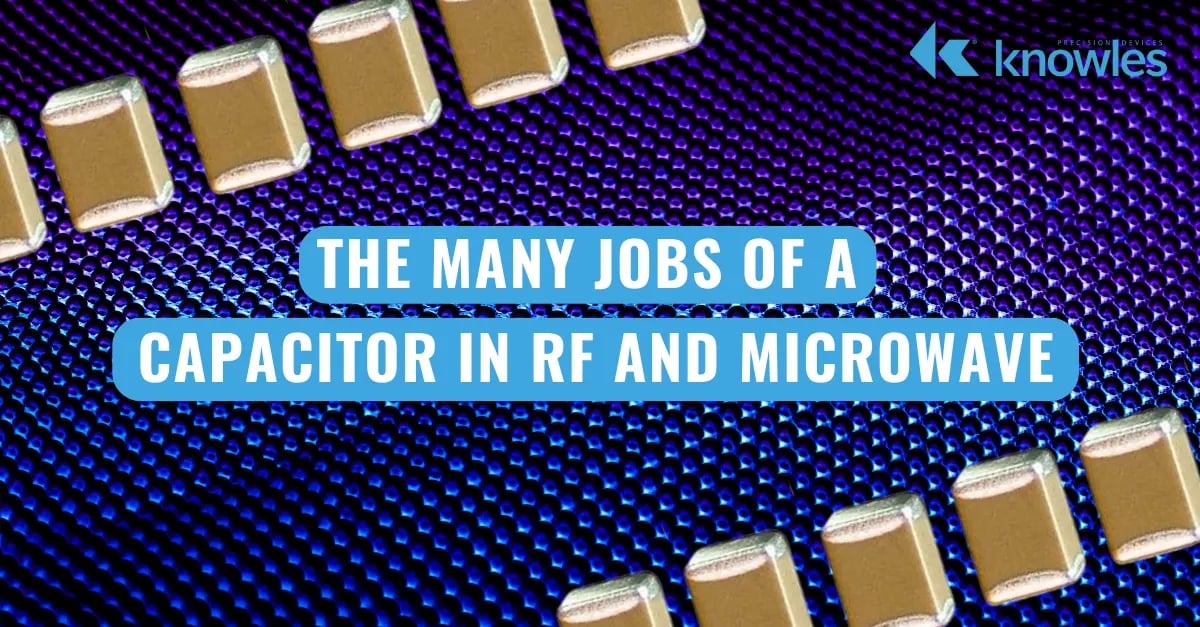
Radio frequency (RF) and microwave applications involve transmitting and receiving electromagnetic signals at high frequencies. While these terms are often used interchangeably, RF means AC signals at 3 kHz to 300 GHz. For microwave, it’s more like 300 MHz to 300 GHz. Capacitors play a central role in these applications because they are concerned with capacitance, naturally, and impedance (i.e., resistance), which vary with frequency. Functionally, these passive electronic components store energy in an electric field.
With many options for configurations and applications, capacitors support a variety of functions in RF and microwave circuits. Here are some examples of key roles they play in these applications:
#Knowles #KnowlesOfficialDistributor #CapacitorRFandMicrowave
![]()
What Are EMI Filters?
01 September 2023
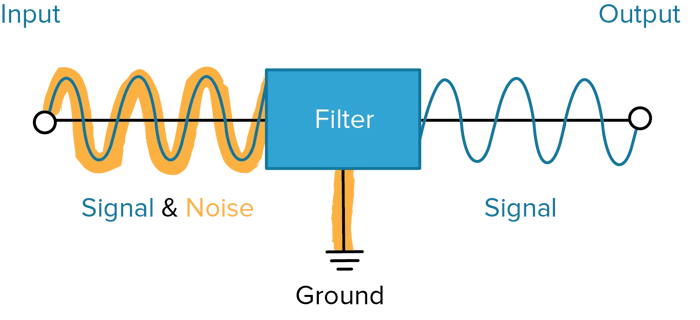
To understand what an electromagnetic interference (EMI) filter is, and what it does, we need to first know what EMI is and why it needs to be filtered. EMI refers to undesirable electromagnetic emissions or disturbances generated either by electronic devices or natural sources in the environment that can interfere with the proper functioning of other nearby devices or systems. EMI noise can propagate through power supply lines and radiate into the environment, potentially causing disruptions or malfunctions in other electronic systems. For many devices, this could cause big issues, which is why many government organizations have developed regulatory standards for electromagnetic compatibility (EMC), or when two pieces of electronic equipment can function in the same environment without adversely impacting one another.
In power electronics, EMI filters are used to suppress and filter out unwanted high-frequency electromagnetic noise generated by the switching operations of power electronic circuits. For ceramic EMI filters specifically, the main function of these components is to provide a low-impedance path to the unwanted high-frequency noise while allowing the desired power signals to pass through with minimum impedance. The EMI filter acts as a low-pass filter, attenuating the high-frequency noise and preventing its propagation (Figure 1).
#Knowles #KnowlesOfficialDistributor #EMIFilters
![]()
Heterogeneous Integration for Electronics Design in RF and Microwave
31 July 2023
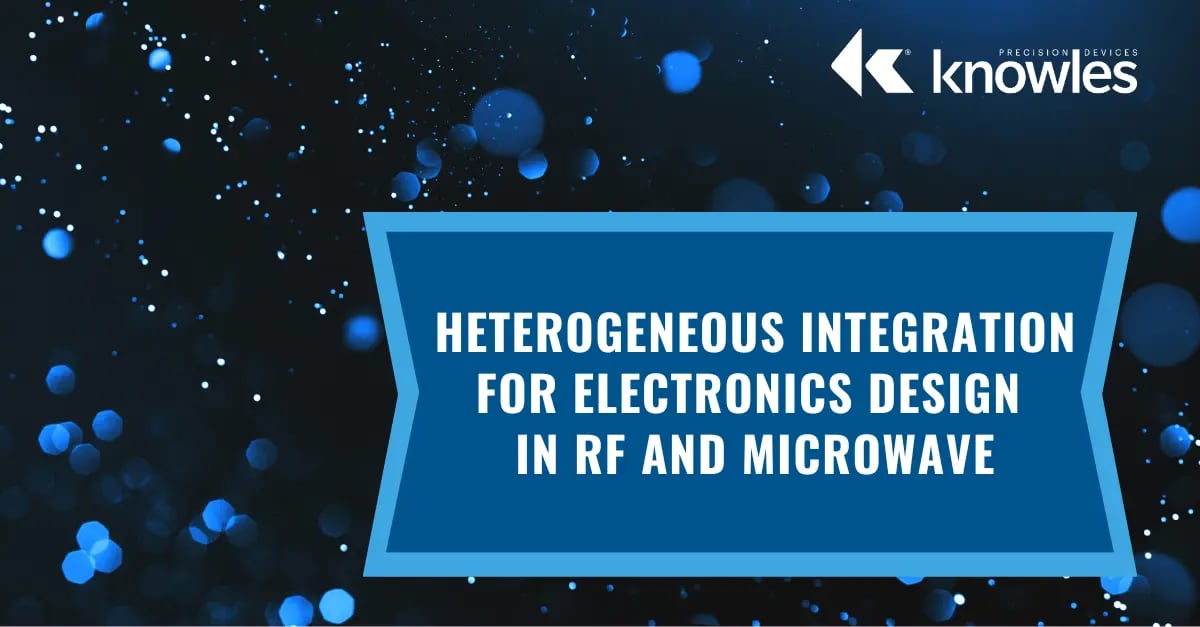
Heterogeneous integration (HI) refers to the process of combining a set of electronic components with different functions and material compositions into a single, compact system. Particularly in radio frequency (RF) and microwave applications, HI-based designs accommodate higher functional density and better performance when implemented with application-specific requirements in mind. Integrated Passive Devices (IPDs), like conductors, resistors, vias, traces, and bridges, play a significant role in HI because they’re largely responsible for the resulting performance optimization when components combine.
IPDs in HI-based designs present a world of possibilities when it comes to performance and manufacturing optimization.
#Knowles #KnowlesOfficialDistributor # HeterogeneousIntegration #ElectronicsDesign # RFandMicrowave
![]()
Understanding the Role of Ceramic Capacitors in Implantable Deep Brain Stimulators
31 July 2023
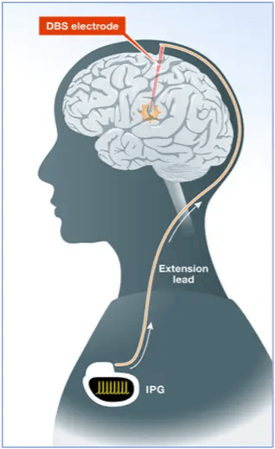
A deep brain stimulator (DBS), also known as a neuro-stimulator, is a medical device that uses electrical stimulation to treat neurological disorders such as Parkinson’s disease, essential tremor, dystonia, and obsessive-compulsive disorder (OCD). The DBS is typically implanted under the skin near the collarbone or in the abdomen, and connected to a thin wire, or lead, that runs under the skin to the targeted area of the brain as shown in Figure 1.
Capacitors are essential components in making sure a DBS functions correctly and safely. There are many roles capacitors must serve within the different parts.
#Knowles #KnowlesOfficialDistributor #CeramicCapacitors #DeepBrainStimulators
![]()
Heterogeneous Integration for Electronics Design in RF and Microwave
31 July 2023

Heterogeneous integration (HI) refers to the process of combining a set of electronic components with different functions and material compositions into a single, compact system. Particularly in radio frequency (RF) and microwave applications, HI-based designs accommodate higher functional density and better performance when implemented with application-specific requirements in mind. Integrated Passive Devices (IPDs), like conductors, resistors, vias, traces, and bridges, play a significant role in HI because they’re largely responsible for the resulting performance optimization when components combine.
IPDs in HI-based designs present a world of possibilities when it comes to performance and manufacturing optimization.
#Knowles #KnowlesOfficialDistributor # HeterogeneousIntegration #ElectronicsDesign # RFandMicrowave
![]()
Understanding the Role of Ceramic Capacitors in Implantable Deep Brain Stimulators
31 July 2023

A deep brain stimulator (DBS), also known as a neuro-stimulator, is a medical device that uses electrical stimulation to treat neurological disorders such as Parkinson’s disease, essential tremor, dystonia, and obsessive-compulsive disorder (OCD). The DBS is typically implanted under the skin near the collarbone or in the abdomen, and connected to a thin wire, or lead, that runs under the skin to the targeted area of the brain as shown in Figure 1.
Capacitors are essential components in making sure a DBS functions correctly and safely. There are many roles capacitors must serve within the different parts.
#Knowles #KnowlesOfficialDistributor #CeramicCapacitors #DeepBrainStimulators
![]()
Heterogeneous Integration for Electronics Design in RF and Microwave
31 July 2023

Heterogeneous integration (HI) refers to the process of combining a set of electronic components with different functions and material compositions into a single, compact system. Particularly in radio frequency (RF) and microwave applications, HI-based designs accommodate higher functional density and better performance when implemented with application-specific requirements in mind. Integrated Passive Devices (IPDs), like conductors, resistors, vias, traces, and bridges, play a significant role in HI because they’re largely responsible for the resulting performance optimization when components combine.
IPDs in HI-based designs present a world of possibilities when it comes to performance and manufacturing optimization.
#Knowles #KnowlesOfficialDistributor # HeterogeneousIntegration #ElectronicsDesign # RFandMicrowave
![]()
Leveraging Thin Film on Ceramic Substrates for Interconnects and Interposers
31 July 2023
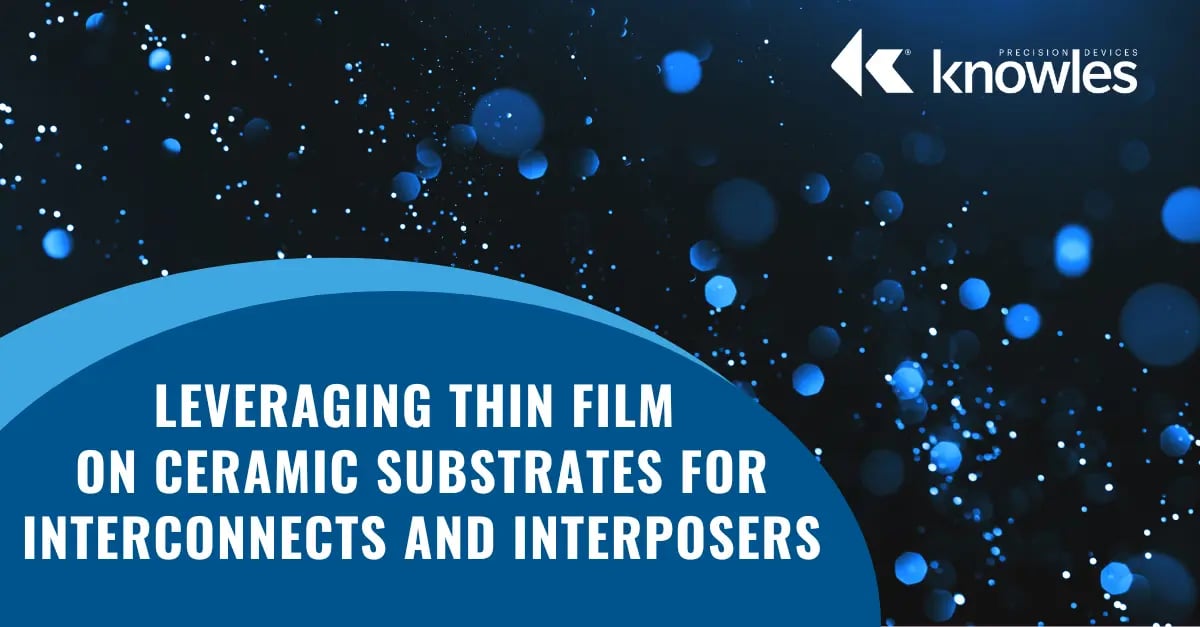
Innovation in advanced packaging was driven, in part, by advancements in interposer design and construction. Interposers are electronic components designed to sit within a package and connect different circuits and components via interconnects. Thin film interconnects are standard in high-frequency components and subsystems where transmission line widths are small (i.e., .005” and under) to improve overall system performance. They also support high-power applications where thermal conductivity is more of a concern and certain materials like beryllium oxide and aluminum nitride are more commonly used.
Ceramics were one of the first materials used as substrates for mass-produced electronics, and they’re still used for packaging and interconnects today. Thin film on ceramics is ideal for surface interconnects with dense circuits. The ability to leverage the high reliability of ceramics while creating more complex, dense designs is particularly helpful in military applications and other applications where systems can’t quit. With a low dielectric constant and low loss tangent, which minimizes signal loss at high frequencies, thin film ceramic interposers are well-suited for RF and microwave applications.
#Knowles #KnowlesOfficialDistributor #Ceramic Substrates #InterconnectsandInterposers
![]()
What Are DC-Blocking Capacitors, and Why Are They Important?
31 July 2023

Electronic devices power our world and allow us to communicate. In all applications requiring signal integrity and accurate power amplification, blocking capacitors are used to provide clean waveforms and correctly amplified voltages.
Generally, waveform systems can be broadly defined into power-related alternating current (AC) and communications-related radio frequency (RF) applications. Both employ waveforms to provide power or information. All of these devices require a blocking capacitor to ensure the waveform conforms to the desired specifications.
#Knowles #KnowlesOfficialDistributor #DC-BlockingCapacitors
![]()
The Important Role of a Bypass Capacitor
16 June 2023
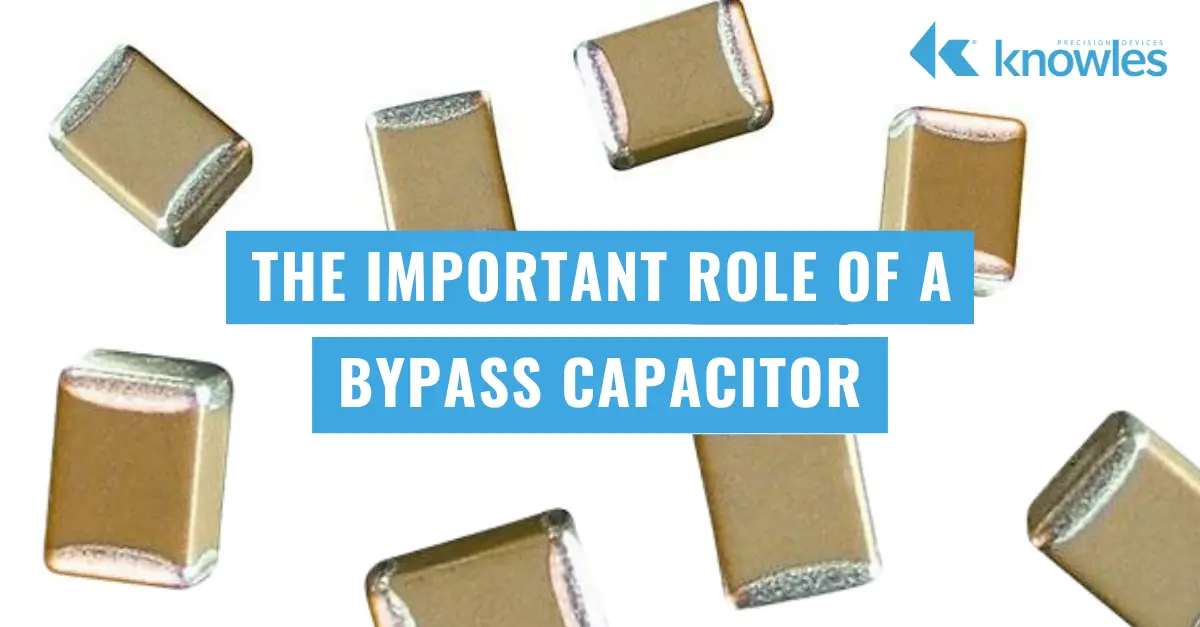
Electronic devices provide the tools we need to power the world. From cell phones to modern vehicles to scientific equipment to the appliances in our homes, we rely on electronics to improve and even lengthen our lives. All electronics depend on clean power, and the bypass capacitor is crucial in ensuring devices safely meet their power specifications.
Every electronic system has the potential to be affected by electromagnetic interference (EMI). EMI can be induced from multiple human-causes or naturally occurring sources,
#Knowles #KnowlesOfficialDistributor # BypassCapacitor
![]()
Thin Film Integrated Passive Devices at Knowles Precision Devices
16 June 2023

The specifications of the end product (e.g., price, size, and reliability) determine which passive components will best serve the design, so the market is dense with options. Integrated passive devices (IPD) represent a category of components designed for optimal, application-specific use rather than general use. IPDs emerged in the 1960s as a solution for reducing the total number of assembly steps in the circuit manufacturing process. To this day, leveraging IPDs is an effective approach for engineers working to meet size, weight, and power (SWaP) goals.
#Knowles #KnowlesOfficialDistributor #PassiveDevices #ThinFilm
![]()
How The Shift to SiC-Based Semiconductors in Military Power Supplies Affects Capacitor Selection
01 June 2023
![]()
To protect people and critical equipment, military-grade electronic devices must be designed to function reliably while operating in incredibly harsh environments. Therefore, instead of continuing to use traditional silicon semiconductors, in recent years, electronic device designers have started to use wide band-gap (WBG) materials such as silicon carbide (SiC) to develop the semiconductors required for military device power supplies. In general, WBG materials can operate at much higher voltages, have better thermal characteristics, and can perform switching at much higher frequencies. Therefore, SiC-based semiconductors provide superior performance compared to silicon, including higher power efficiency, higher switching frequency, and higher temperature resistance as shown in Figure 1.
As the shift to using SiC-based semiconductors continues, other board-level components, such as capacitors, must change as well. For example, as systems operate at higher frequencies, the capacitance needed decreases, leading to many instances where film capacitors can be replaced by ceramic capacitors.
#Knowles #KnowlesOfficialDistributor #SiC-Based Semiconductors #MilitaryPowerSupplies
![]()
The Capabilities, Benefits, and Key Applications for StackiCap
25 May 2023
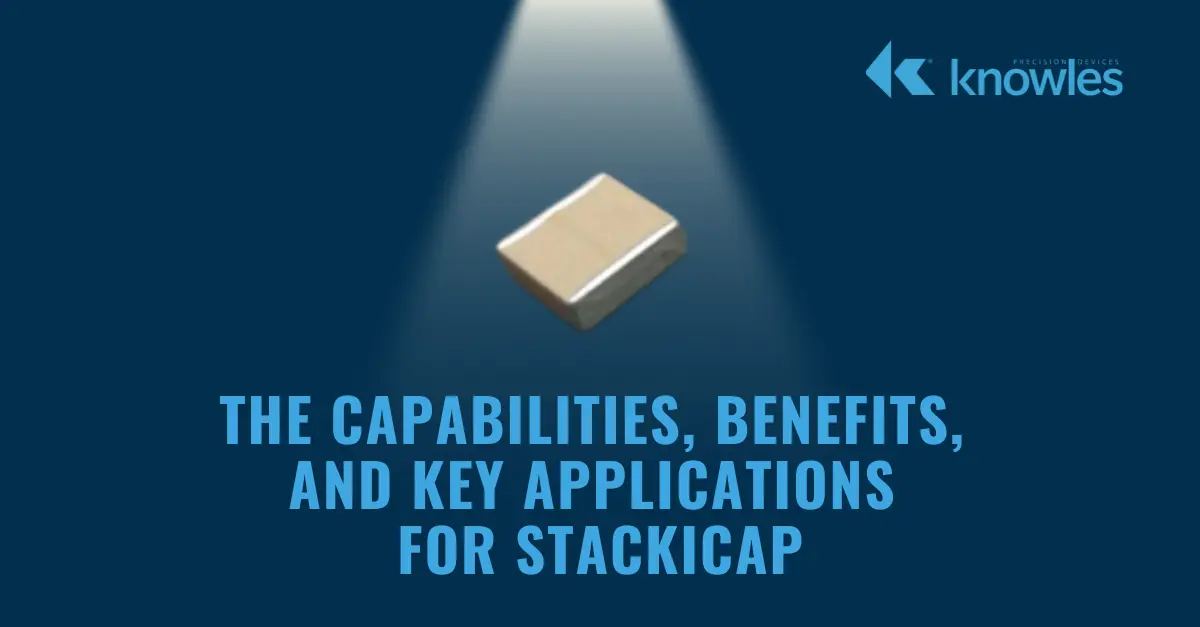
From industrial to automotive to aerospace applications, power electronics are demanding higher capacitance in smaller packages. Therefore, to meet both capacitance demands and size requirements, electronic designers simply cannot continue to add more capacitors. While capacitor stacking is an option, many stacked assemblies are still quite large and stacking often introduces new failure modes, such as piezo electric cracking (Figure 1).
To overcome this issue, many capacitor manufacturers’ solutions use special, stronger dielectric formulations, but these usually come with trade-offs regarding dielectric constant, and therefore the ultimate capacitance value available.
#Knowles #KnowlesOfficialDistributor #BenefitsforStackiCap
![]()
Why Bidirectional Charging for EVs Requires Special Attention to Design
12 May 2023
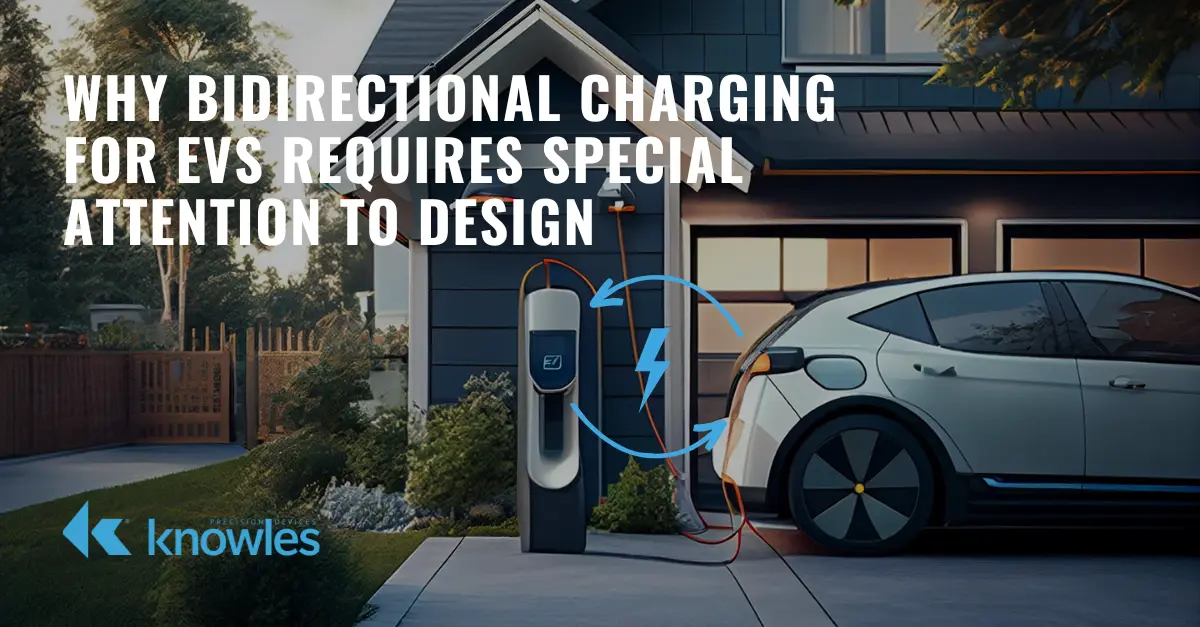
Bidirectional charging capabilities are the next big perk for EV owners. Perfecting this technology means EV batteries can fuel vehicles and private homes or local grids. Right now, OEMs are part of a huge push to make bidirectional chargers resilient and reliable.
When an EV is charging, alternating current (AC) from the grid is converted into direct current (DC) electricity, which can be used by the vehicle. This conversion can be performed by the vehicle’s converter, or a converter located inside the charging apparatus.
#Knowles #KnowlesOfficialDistributor #BidirectionalCharging #EVsDesign
![]()
High Reliability for High Stakes: Electronics Components Powering Hypersonic Missiles
10 March 2023

As countries around the world continue to work on more sophisticated ways to conduct military missions – including weaponry that can reach intended targets quicker with even greater accuracy while remaining virtually undetectable – aerospace and defense companies are pushing the missile speed boundaries. Military aircraft and weaponry today are capable of traveling at supersonic speeds and are even entering hypersonic speed territory.
When creating missiles designed to travel at Mach 5, which is nearly 4,000 mph or about a mile per second, engineers face new challenges for developing the embedded electronics on missiles. Components used inside these missiles must withstand extraordinarily harsh conditions including intense shock and vibration, temperatures approaching 2,000° F, and extreme pressure from G forces during acceleration. In addition, to ensure real-time precision at these high speeds, the missiles must maintain precise communications to allow the on-board systems to adjust to changing conditions.
#Knowles #KnowlesOfficialDistributor #HightReliability #ElectronicsComponent #HypersonicMissiles
![]()
High-Performance Capacitors to Meet the Needs of Demanding Aerospace and Defense Applications
12 April 2023

From military aircraft to electronic warfare defense systems, aerospace and defense applications are placing new demands on their power electronics. Defense electronics systems must function reliably for their lifetime while operating at higher voltages and wider temperature ranges, and all while becoming smaller, lighter, and consuming less power.
These demands are causing a new trend in circuit design. Electrical engineers are now shifting from using conventional silicon-based (Si) semiconductors to wide-bandgap semiconductors built with silicon carbide (SiC) or gallium nitride (GaN). This is because electronic components built using these materials can switch faster, are more efficient, and have lower size, weight, and power (SWaP) then traditional Si-based options. As this shift is occurring, the “jobs” that need to be done by capacitors used in the power electronics systems of these aerospace and defense applications are changing as well.
#Knowles #KnowlesOfficialDistributor #AerospaceandDefanseApplications
![]()
High Reliability for High Stakes: Electronics Components Powering Hypersonic Missiles
10 March 2023

As countries around the world continue to work on more sophisticated ways to conduct military missions – including weaponry that can reach intended targets quicker with even greater accuracy while remaining virtually undetectable – aerospace and defense companies are pushing the missile speed boundaries. Military aircraft and weaponry today are capable of traveling at supersonic speeds and are even entering hypersonic speed territory.
When creating missiles designed to travel at Mach 5, which is nearly 4,000 mph or about a mile per second, engineers face new challenges for developing the embedded electronics on missiles. Components used inside these missiles must withstand extraordinarily harsh conditions including intense shock and vibration, temperatures approaching 2,000° F, and extreme pressure from G forces during acceleration. In addition, to ensure real-time precision at these high speeds, the missiles must maintain precise communications to allow the on-board systems to adjust to changing conditions.
#Knowles #KnowlesOfficialDistributor #HightReliability #ElectronicsComponent #HypersonicMissiles
![]()
Filter Shape Factor and Selectivity
02 March 2023
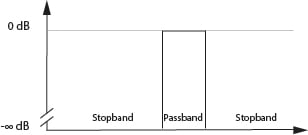
The Ideal Filter would have unit gain (0dB) in its pass band and a gain of zero (-infinity dB) in its stop band. Between pass band and stop band there would be no indecision and would transition from 0dB to -infinity dB asymptotically. It would pass only the required frequencies without adding or subtracting anything from the signal and like a very discrete and fastidious butler we would not see it – just its perfect management of the frequencies in its care.
Sadly we cannot have perfect filters in the real word and so we compromise and accept some amount of non-unity gain in the pass band (insertion loss and pass band ripple) and non-zero gain in the stop band (finite stop band attenuation and stop band ripple). In addition, there is some transition from pass band to stop band that needs to be understood and managed. This Transition Band can be a defining characteristic in the usefulness of a filter for a given application, and is talked about using the terms Shape Factor and Selectivity.
#Knowles #KnowlesOfficialDistributor #FilterShape
![]()
The DC Bias Phenomenon Explained
02 March 2023
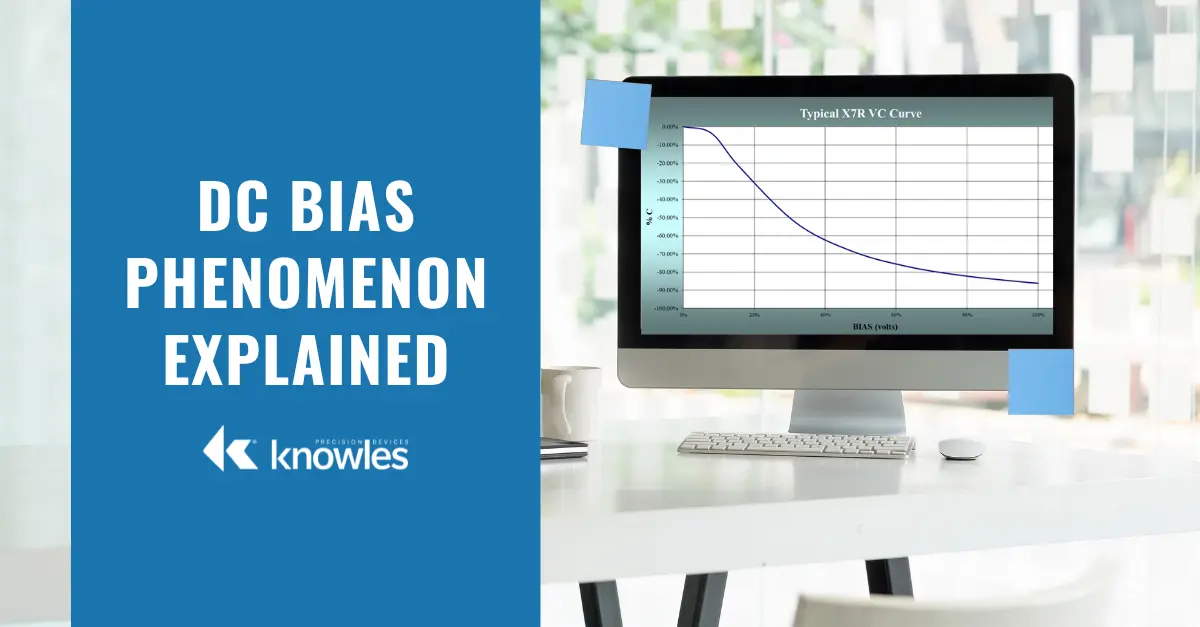
When constructing multilayer ceramic capacitors (MLCCs), there are two classes of dielectrics electrical engineers typically select from depending on the application – Class 1, which consists of non-ferroelectric materials such as C0G/NP0, and Class 2, which are ferroelectric materials such as X5R and X7R. One key difference between these materials comes in the form of capacitance stability as voltage and temperature increase. With Class 1 dielectrics, capacitance will remain stable when DC voltage is applied and operational temperature increases. On the other hand, Class 2 dielectrics, which have a higher dielectric constant (K), are less stable with regards to temperature, voltage, frequency, and time.
While a variety of modifications can be made to increase capacitance, including changing the surface area of the electrode layers, the number of layers, the K, or the distance between the two electrodes, capacitance will still eventually dramatically decrease for Class 2 dielectrics when DC voltage is applied. This is because of a phenomenon called DC bias that causes Class 2 ferroelectric formulations to eventually experience a decrease in dielectric constant as DC voltage is applied.
#Knowles #KnowlesOfficialDistributor # DCBiasPhenomenon
![]()
Resonant Capacitors: Your Key to Building Stable and Reliable Wireless EV Charging Technology
20 January 2023
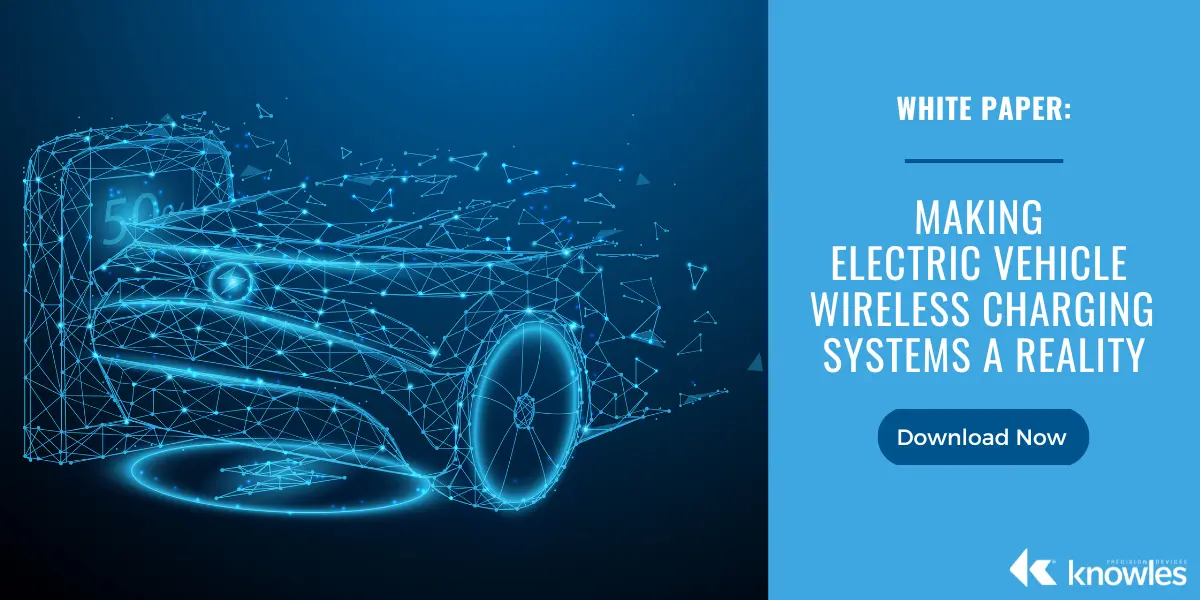
As electric vehicle (EV) adoption for both consumer and commercial purposes rapidly grows, so does the need for a more widespread, and faster, charging infrastructure. While we’ve seen vast improvements in charging technology in the last few years, as additional regulations on combustion vehicles are implemented and reliance on EVs increases, further EV charging innovations are needed. Currently, wireless charging is the newest EV charging technology evolving.
For wireless EV charging, inductive charging is used. This method of wireless power transfer works by creating a magnetic-resonance field between a transmitting pad on the ground that is physically connected to a power source and a receiving pad on the bottom of the EV that is connected to the vehicle’s battery.
#Knowles #KnowlesOfficialDistributor #ResonantCapacitors #WirelessEVCharging
![]()
Top Articles of 2022: Space, MRIs, mmWave, and More
03 January 2023

In 2022, our engineering experts worked hard to provide their insights into the latest industry trends and challenges as well as teach the basics of the technology and engineering powering your most important applications. We hope you found our insights valuable and thank you for turning to us to learn about the industry. Here are the top five blog posts of the year.
Our Filter Basics series was created to help you understand the concepts all filters share to help you simplify your future filtering decisions. Our first post in the series defines the basic properties impacting capacitor and inductor performance including resistance, capacitance, inductance, and impedance.
#Knowles #KnowlesOfficialDistributor #TopArticles2022
![]()
What it Takes for MLCCs to Meet the High-Reliability Requirements of Medical Implantable Devices
09 December 2022
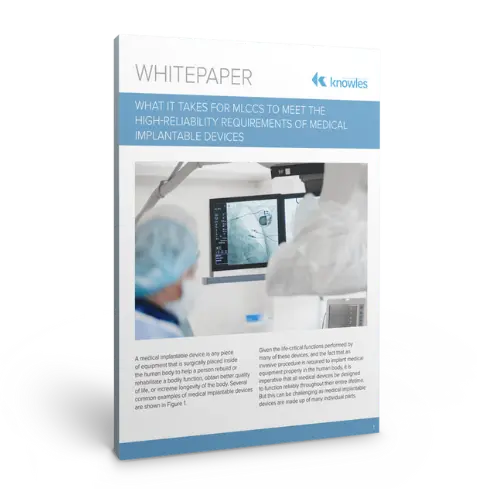
Given the life-critical functions performed by many medial implantable devices, and the invasive procedure required to implant medical equipment properly in the human body, it is imperative that all medical devices are designed to function reliably throughout their entire lifetime. But this can be challenging as medical implantable devices are made up of many individual parts, including a variety of electronic components such as multi-layer ceramic capacitors (MLCCs). This means MLCC manufacturers today are not only tasked with responding to the demand for product miniaturization, they also need to be sure their MLCCs can meet the high-reliability expectations for these life-critical applications.
In this white paper, we dive more into how to overcome the challenges associated with ensuring the reliability of electronic components designed for medical devices
#Knowles #KnowlesOfficialDistributor #MedicalImplantable
![]()
Are COTS Components Ready for Space?
17 November 2022
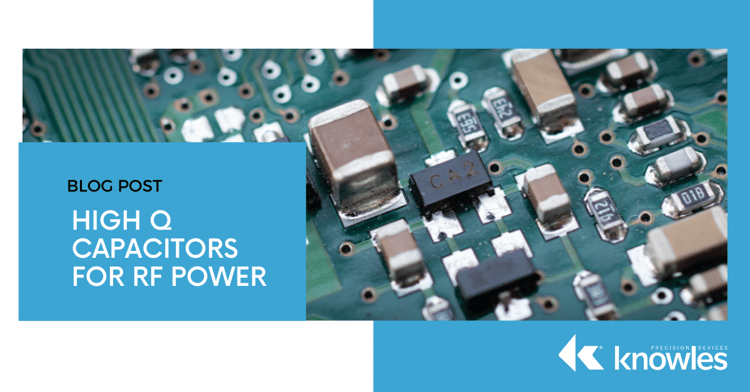
The generation of RF energy is critical for a wide range of technologies including magnetic resonance imaging (MRI), semiconductor manufacturing, industrial lasers, and wireless charging systems that require high-frequency current and minimal instances of power loss. For example, with an industrial laser, the RF plasma excitation, which is when electrons are broken off an atomic bond and plasma forms, requires RF sources ranging from 1kHz to 40.68MHz depending on the energy required, and a CO2 laser RF power supply that contains a standard source at 13.56MHz, 81MHz, or 125MHz.
These applications requiring high-frequency current face the challenge of power loss in resonant circuits, which is an issue because maintaining efficiency within a power supply is key to optimizing performance. At the component level, power loss is accounted for by considering equivalent series resistance (ESR), which is the measurement of the non-ideal electrical resistances in series with a capacitor. The higher the ESR, the higher the losses in the capacitor.
#Knowles #KnowlesOfficialDistributor #HighQCapacitors #RFPower
![]()
Are COTS Components Ready for Space?
17 November 2022
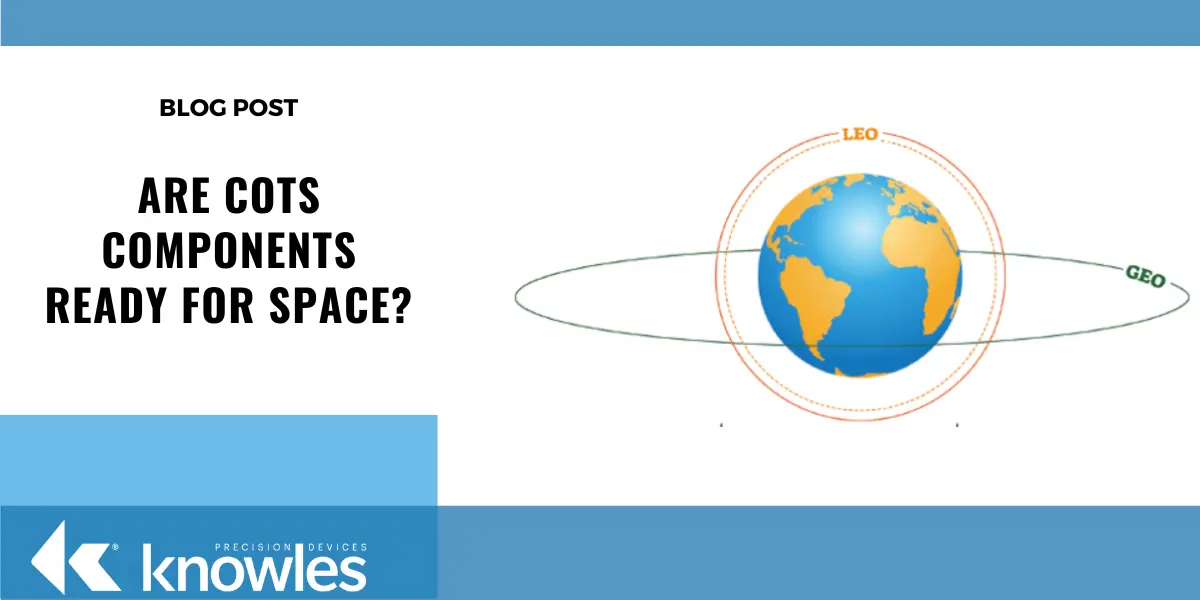
After decades of viewing MIL-SPECs as the gold standard for qualifying and screening parts for viability in space, NASA has recently changed course, and is adopting commercial-off-the-shelf (COTS) parts as an option for a variety of space applications. Burgeoning changes in industry trends, a drive to remain competitive, and the desire to guide budget-constrained missions pushed the organization to commission a NASA Engineering and Safety Center (NESC) study to evaluate the reliability of COTS parts. Upon completion of the study, NASA aims to create a consistent set of requirements at the agency level to minimize risk and impact of part selection/usage on the performance of NASA spaceflight technology.
To begin, it is crucial to understand NASA’s definition of what constitutes a COTS component. As defined by NASA Chief Safety and Mission Assurance Engineer Jesse Leitner, COTS parts are “parts where the manufacturer solely establishes and controls the specifications for performance, configuration and reliability.” This means that the manufacturer is the sole party involved in selecting the design, material, processes, and testing used to assess the viability of a part. After completing manufacturer-designed testing and meeting safety criteria, COTS parts are then usually sold through commercial distributors.
#Knowles #KnowlesOfficialDistributor #COTSComponents
![]()
Understanding the Differences Between Pacemakers and ICDs
14 November 2022
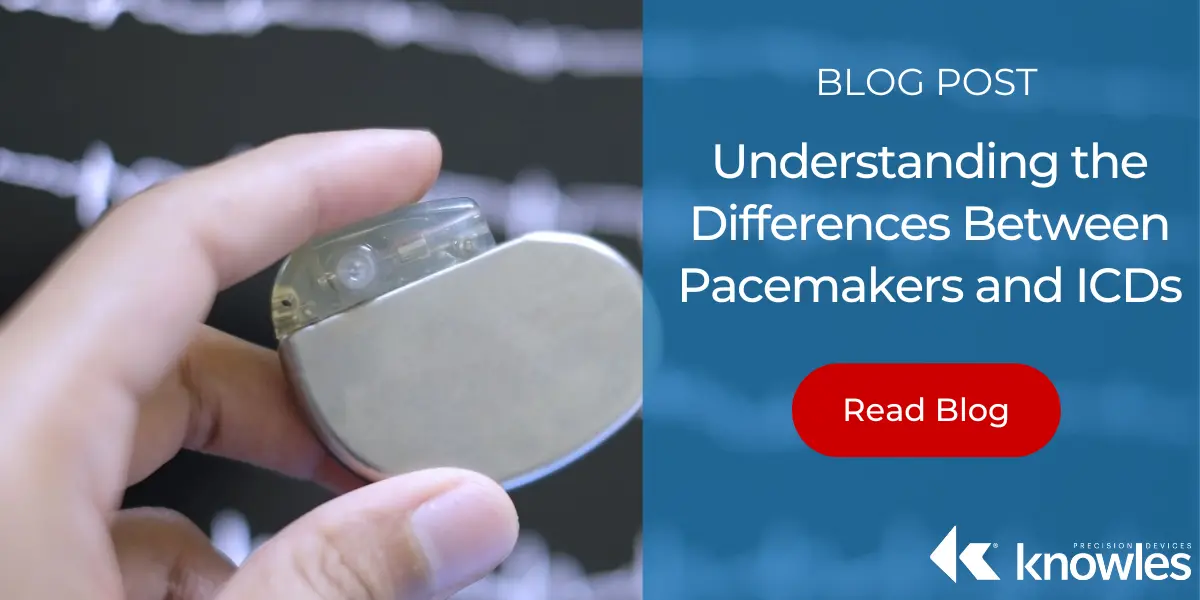
For more than 3 million people in the United States, pacemakers and implantable cardioverter defibrillators (ICDs) are life-changing technology they rely on. While both devices are implantable medical devices designed to improve the quality of life for people with heart arrhythmia, a condition where the heart beats irregularly, each devices serve a different purpose.
A pacemaker, shown in Figure 1, is an implantable medical device designed to help patients maintain a normal heartbeat and rhythm. The small device is placed under the patient’s skin in their upper chest and consists of a computer that senses when the heart beats at the wrong speed, or out of rhythm. When the pacemaker detects that the heart is out of rhythm, it sends out low-energy electrical pulses to return the heartbeat to a steady rhythm and rate.
#Knowles #KnowlesOfficialDistributor #PacemakersandICDs
![]()
Selecting MLCCs that Meet the High-Reliability Requirements of Medical Implantable Devices
31 Oktober 2022

Designing medical implantable devices for high reliability is crucial for a variety of reasons. First, given the life-critical functions performed by many medial implantable devices, and the invasive procedure required to implant medical equipment properly in the human body, it is imperative that all medical devices are designed to function reliably throughout their entire lifetime. Furthermore, since patient safety is paramount, any precautions to reduce the possibility of potentially life-threatening malfunctions, recalls, and replacement surgeries are necessary. And, beyond preventing patient safety issues, there may also be severe economic and legal implications for device manufacturers if an implantable device fails.
But, ensuring the reliability of medical implantable devices is not straightforward since these devices are typically made up of many individual parts, including a variety of electronic components such as multi-layer ceramic capacitors (MLCCs). For medical device designers, there are a lot of decisions to make when selecting MLCCs. Some of the more standard considerations include case size, voltage and capacitance rating, and dielectric selection to ensure management of operating temperatures and temperature coefficients.
#Knowles #KnowlesOfficialDistributor #MLCCnews #MedicalImplantable
![]()
Filter Basics 10: Resonators as Microwave Devices
13 Oktober 2022
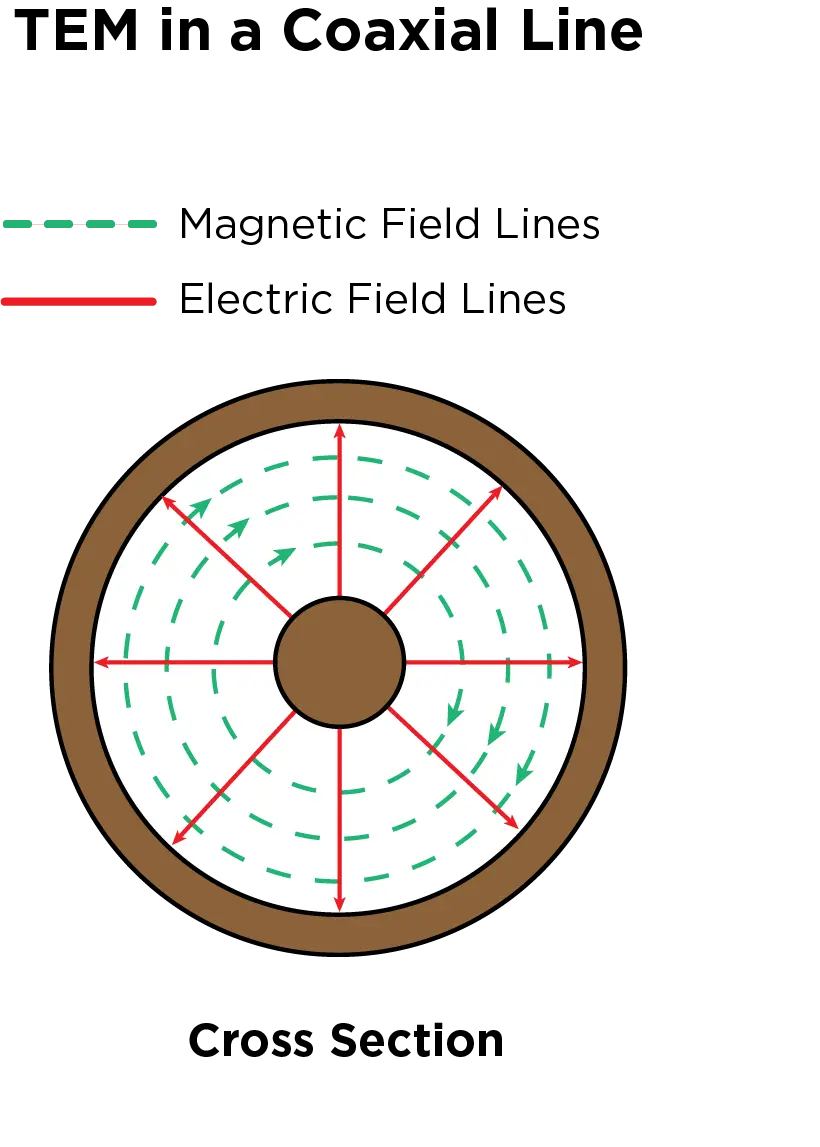
To help customers with filter selection, we generally provide a lot of information on what our filters can do. But in this new Filter Basics Series, we are taking a step back to cover some background information on how filters do what they do. Regardless of the technology behind the filter, there are several key concepts that all filters share that we will dive into throughout this series. By providing this detailed fundamental filter information, we hope to help you simplify your future filtering decisions.
Resonators are essential building blocks for bandpass filters as these components are designed to store frequency-dependent electric and magnetic energy. A simple resonator, such as an LC resonator, can store the frequency-dependent electric energy in the capacitance (C) and magnetic energy in the inductance (L). Resonant frequency of a resonator occurs when the energy stored in the electric field is equal to the energy stored in the magnetic field. In this post, we’re going to look more closely at two different types of resonators used in filters – coaxial ceramic and dielectric.
#Knowles #KnowlesOfficialDistributor #Resonators #MicrovaweDevices
![]()
Understanding The Basics of Ceramic Coaxial Resonator Filters
08 September 2022

Before jumping into a discussion on ceramic coaxial resonators, it is important to understand what a resonator is and how these electrical components work. In general, a resonator is an essential component for constructing a bandpass filter since the resonator is what will allow specified frequencies, or bands of frequencies, to pass through the filter as shown in Figure 1.
A simple resonator, such as an LC resonator, can store frequency-dependent electric energy in the capacitance (C) and magnetic energy in the inductance (L). The resonant frequency of a resonator occurs when the energy stored in electric field is equal to the energy stored in the magnetic field.
#Knowles #KnowlesOfficialDistributor #CeramicCoaxialResonators
![]()
Meeting the Unique Design Requirements for Leadless Pacemaker Electrical Components
01 September 2022
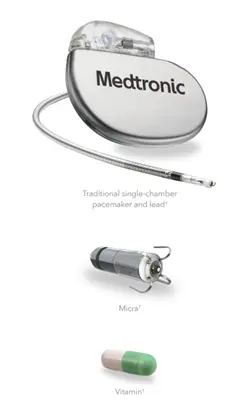
Today, millions of people around the world rely on pacemakers to help regulate their heart’s rhythm. A traditional pacemaker usually consists of a pulse generator that is about the size of a tea bag and implanted under the skin near the collarbone, and a wire, or lead, that runs through a blood vessel to the heart. The end of the lead has an electrode on it that touches the heart wall to deliver electrical impulses. However, in the last decade, innovations in pacemaker technology have led to the introduction of a new style of pacemaker, known as the leadless pacemaker, that is about 1/10th the size of a traditional pacemaker, or about the size of a vitamin (Figure 1).
This tiny leadless pacemaker is a self-contained generator and electrode system, which means it does not require leads and why it is referred to as a leadless pacemaker. This device is designed to be implanted directly in the heart through the femoral vein, which eliminates many of the common complications associated with traditional pacemakers that stem from the leads that permanently run through a patent’s veins into the heart. It is important to note that leadless pacemakers cannot replace a traditional pacemaker as these devices will only work for patients who require single-chamber ventricular pacing such as those who have Bradycardia, which is a slow heart rate that is usually below 60 beats per minute.
#Knowles #KnowlesOfficialDistributor #ElectricalComponents
![]()
Now Available! The Engineer’s Design Kit for SLCs
01 September 2022
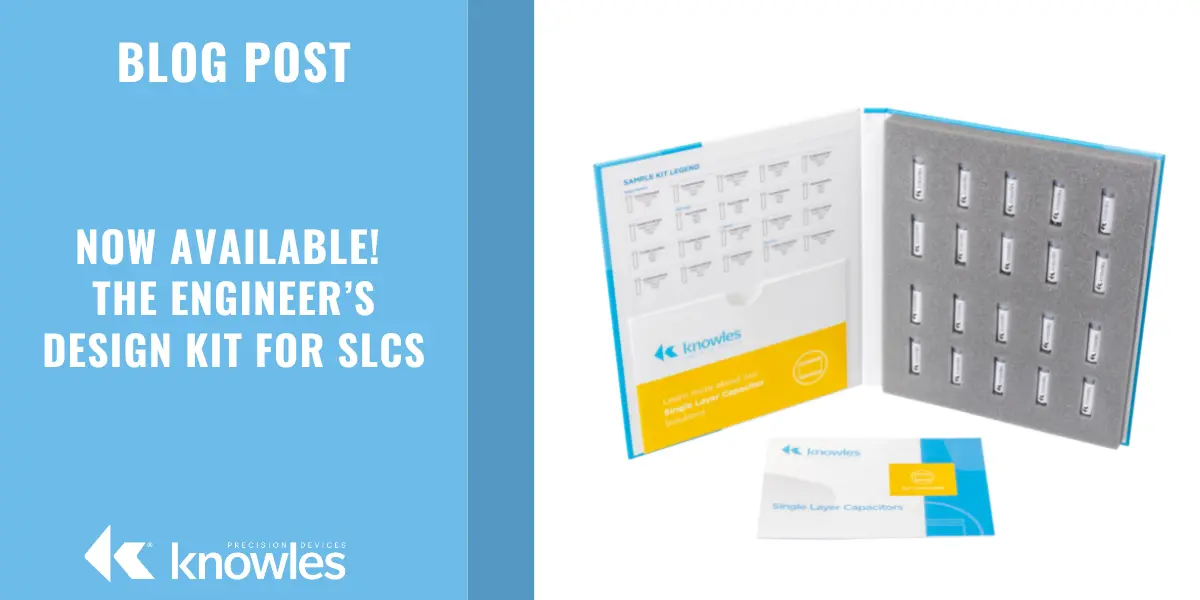
With the challenges of today’s global supply chain, we understand that improving the efficiency of your development process is critical to delivering quality products on time. When evaluating components for use in your product, you don’t have time to wait 2–3 weeks for a product sample. And you certainly don’t have the time to wait another 2–3 weeks if you discover that the sample you ordered isn’t right for your design. That’s why Knowles Precision Devices is now offering all-in-one Single Layer Capacitor (SLC) Design Kits for design engineers.
With our new SLC kits, you can access samples of our product in a single kit, including some of our SLC part styles, values Having a complete range of samples readily available means you can easily find the SLC that will best meet the requirements of your application.
#Knowles #KnowlesOfficialDistributor #SLCs
![]()
Filter Basics 8: An In-Depth Look at Bandwidth
01 September 2022
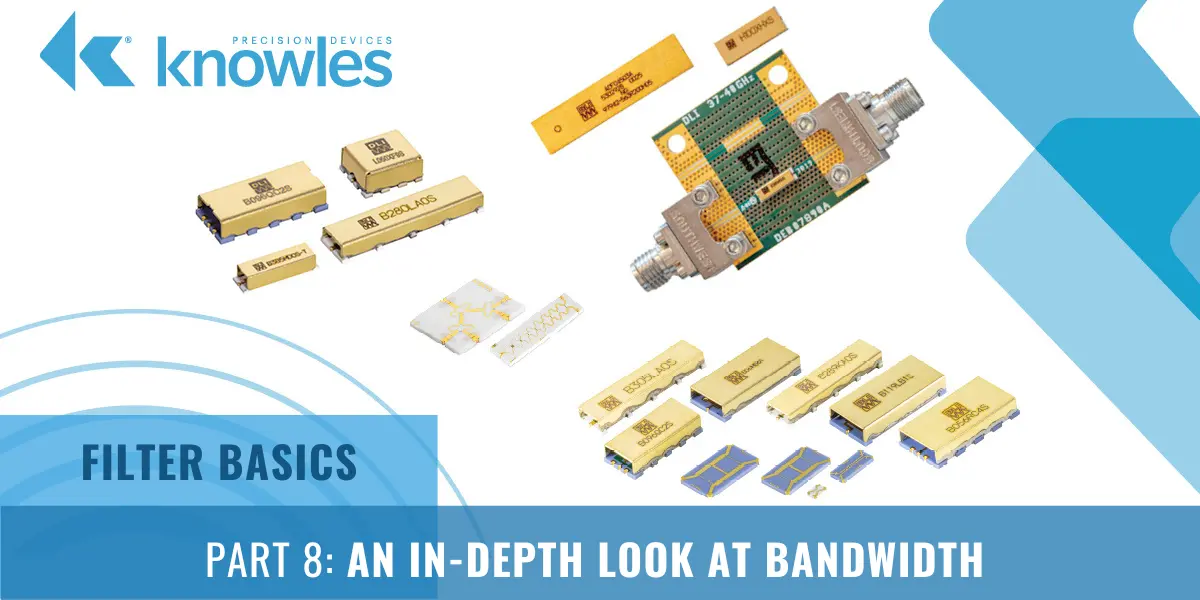
To help customers with filter selection, we generally provide a lot of information on what our filters can do. But in this new Filter Basics Series, we are taking a step back to cover some background information on how filters do what they do. Regardless of the technology behind the filter, there are several key concepts that all filters share that we will dive into throughout this series. By providing this detailed fundamental filter information, we hope to help you simplify your future filtering decisions. In part 8 of this series, we dive deeper into bandwidth by looking at the history of bandwidth, how bandwidth dictates data rate, and why the type of filter required will vary depending on an application’s bandwidth requirements.
In Part 3 of our Filter Basics Series, we provided a brief overview of five key filter specifications to understand, one of which was bandwidth. In this post, we are going to look more closely at what bandwidth is and why we need to consider bandwidth when selecting a filter.
#Knowles #KnowlesOfficialDistributor #Bandwidth
![]()
Understanding the Nuances of Space-Level Filter Qualification and Screening
01 September 2022

When launching expensive mission-critical equipment and people into space, there is absolutely no room for failure of any component. Therefore, if you are an RF system designer working on an aerospace application, you must be sure you are selecting high-quality, high-reliability electronic components for all your designs. But do you have a process in place for this type of component selection? At Knowles Precision Devices, we know it can be a challenging to navigate component selection for aerospace applications as there are many combinations of standards and tests that can be performed to space-qualify parts.
We also know that if can be difficult to just fully understanding the terms space-qualified and space screening. For starters, the term space-qualified has a very specific meaning that not all vendors understand. In short, space-qualified parts have been designed, manufactured, and tested to meet the special electrical, mechanical, or environmental requirements for use in the launch and deployment of satellites or high-altitude flight systems. Parts screening on the other hand is a series of tests and inspections at the parts level that is intended to remove nonconforming and/or infant mortal parts to increase confidence in the parts selected for use.
#Knowles #KnowlesOfficialDistributor #FilterQualification
![]()
One Stop for All Your Microwave and Filtering Needs
01 September 2022

The Knowles Precision Devices DLI brand of technologies has expanded to offer more products and capabilities to our customers with the acquisition of Integrated Microwave Corporation (IMC). As a result, we now offer a complete range of RF and microwave filtering solutions including custom ceramic filters, resonators, and diplexers, lumped element filters and cavity filters from the VHF to the Ka band.
We can provide a wide array of custom and catalog narrowband and broadband filters for multiple types of commercial applications, including radio broadcasting, wireless point-to-point radios, smart metering, GPS, and 5G.
#Knowles #KnowlesOfficialDistributor #MicrovaweFiltering
![]()
Filter Basics Part 7: Different Approaches to Q Factor
26 August 2022
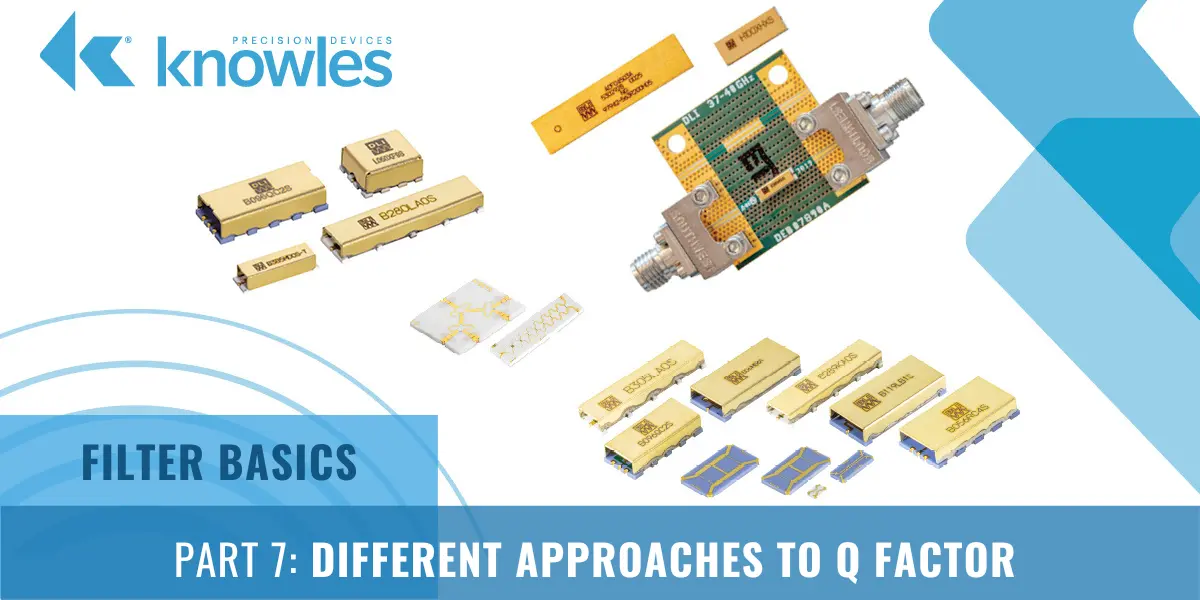
To help customers with filter selection, we generally provide a lot of information on what our filters can do. But in this new Filter Basics Series, we are taking a step back to cover some background information on how filters do what they do. Regardless of the technology behind the filter, there are several key concepts that all filters share that we will dive into throughout this series. By providing this detailed fundamental filter information, we hope to help you simplify your future filtering decisions. In part 7 of this series, we perform a deep dive on the different ways you can think about Q factor for the components going into your filter or your filter as a whole.
As an RF engineer, you likely frequently hear the term “quality factor”, or Q factor, used as shorthand figure of merit (FOM) for RF filters. In short, Q factor is expressed as the ratio of stored versus lost energy per oscillation cycle
![]()
Comparing PME and BME MLCCs for High-Reliability Application
26 August 2022
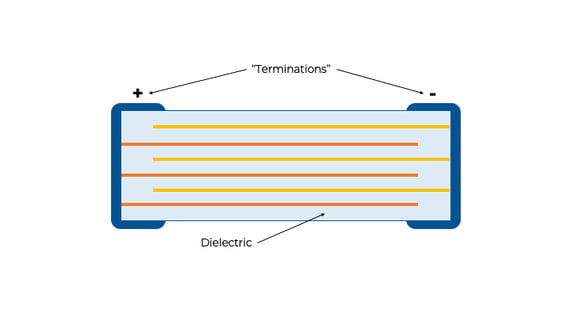
Multilayer ceramic capacitors (MLCCs) are made up of two materials—ceramic dielectric material and metal electrode material. Layering metal electrodes and ceramic dielectrics (Figure 1.) achieves voltages that are capable of producing high electric fields that ultimately allow MLCCs to regulate current flow and prevent electromagnetic interference between components. There are two common electrodes used in MLCCs: precious metal electrodes (PMEs), containing palladium silver, and base metal electrodes (BMEs), containing nickel or copper. Each electrode type holds a spot in the capacitor world for a reason.
In this blog post, we explore the different characteristics to keep in mind when selecting electrode materials, particularly for a high-reliability application.
![]()
On-Demand Webinar: Using MLCCs for Wireless Resonant Circuits
20 Juni 2022
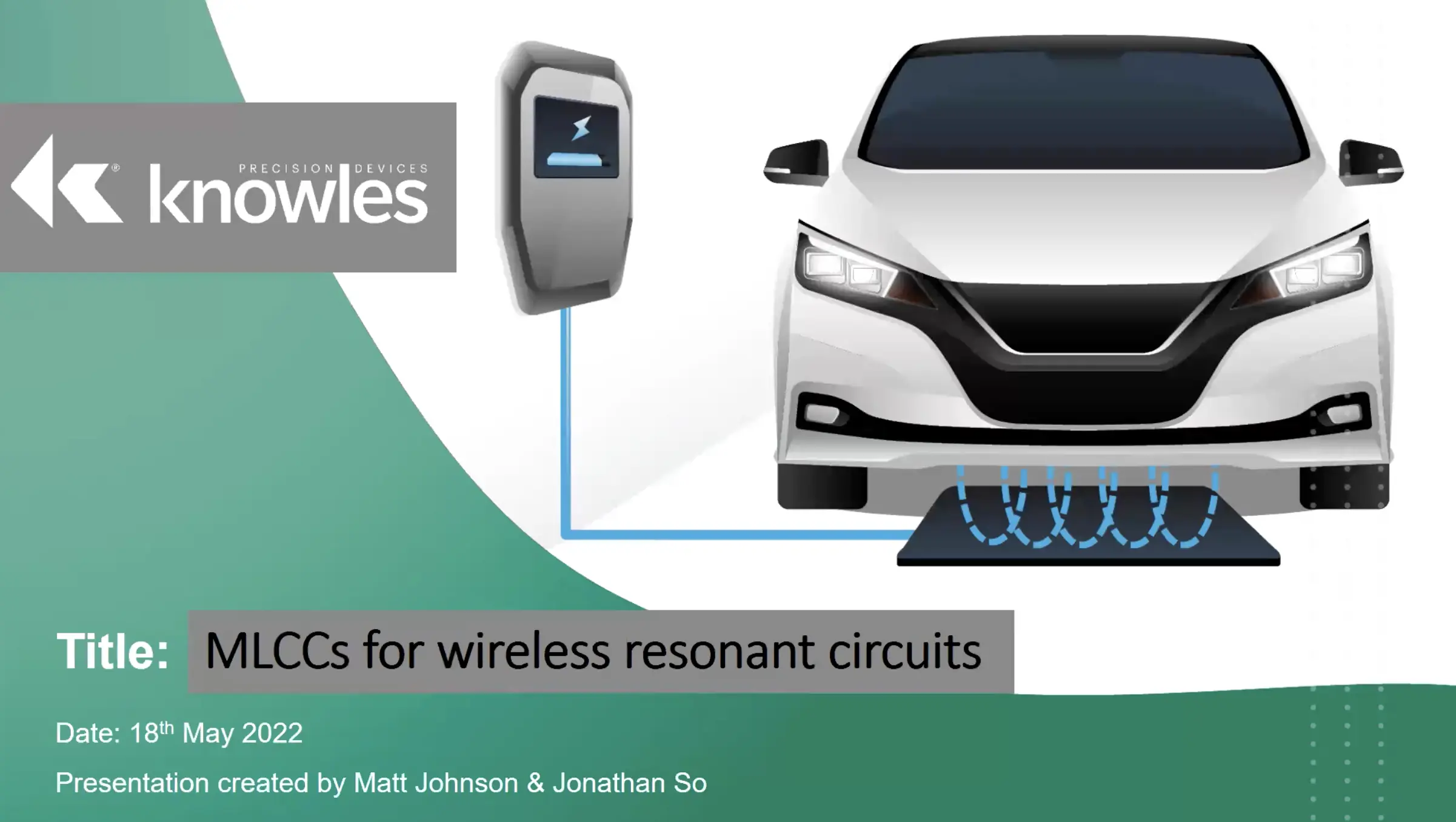
To ensure the efficiency and reliability of high-power wireless charging applications such as electric vehicle charging stations, wireless power transfer circuits need stable, high-capacitance, high-voltage capacitors to serve as the tank capacitor in the LC resonant circuit. But these demanding circuits present a number of design challenges when using multi-layer ceramic capacitors (MLCCs). In addition to covering the basics of performing wireless power transfer with resonant circuits using MLCCs, this webinar also cover the following topics:
How to balance circuit design needs for multi-chip assemblies, The impacts of temperature rise and thermal management when using MLCCs and techniques for avoiding electrical failure and mechanical cracking, An alternative solution for designing wireless resonant circuits using a custom approach to large capacitor assemblies that offers high voltage and high capacitance in a compact form factor
![]()
A Guide to Snubber Capacitor Selection for SiC-Based Switching Converters
17 Mei 2022
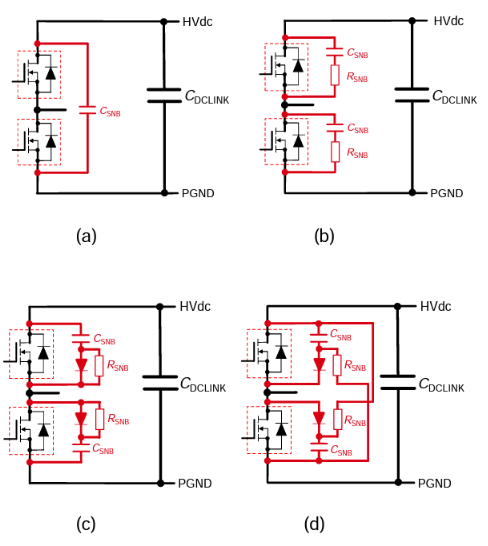
Today, most converter circuits now include semiconductors and switches made of silicon carbide (SiC) instead of plain old silicon (Si). This is because when silicon and carbon are combined, the resulting material, SiC, has excellent mechanical, chemical, and thermal properties. Therefore, SiC-based converters can handle voltages up to 10 times greater than converters using just Si while also offering lower losses. These characteristics make these converters an excellent option for applications such as power electronics, industrial devices, and electric vehicle (EV) charging stations. In this first post, we dive into the advantages of using snubber circuits to protect SiC-based converters and discuss how to further increase these efficiencies by focusing on capacitor selection.
When switching occurs quickly, dv/dt and di/dt increase, which, when coupled with stray inductance, can result in a large surge voltage and/or current. To be sure you do not exceed the maximum rated voltage/current of the device, a method to control surge voltage and current is needed. One efficient way to do this is to use a snubber circuit.
![]()
SLCs vs. MLCCs: Which Capacitor Type is Right for My Application?
11 February 2022
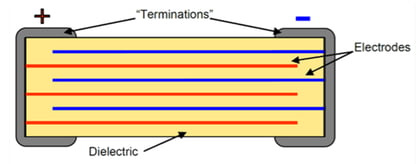
Capacitors are essential passive components for designing any electrical circuit. But there are so many options to choose from with a wide range of specifications that it can be overwhelming to determine what capacitor may be the best fit for your application. One early decision that circuit designers must make is to determine if a single-layer capacitor (SLC) or multi-layer ceramic capacitor (MLCC) is the right fit for their application needs.
At a high-level, these capacitor types seem similar as both SLCs and MLCCs can be used for charging and storing, filtering, or bypass functions in a circuit. To determine which one is the best fit for your application, let’s first look at the basic structure of each capacitor type. SLCs are the most basic capacitor type available since these capacitors consist of a single layer of dielectric material, or insulating layer, sandwiched between a positive and a negative electrode.
![]()
Striking a Balance for Spectrum Needs: 5G Communications vs. Aircraft Altimeter Operations
20 Januari 2022

At this point, you’ve likely seen a slew of mainstream news articles about 5G causing safety concerns around air travel. In fact, ahead of the rollout of new 5G services from major US telecom companies including Verizon and AT&T on Jan. 19, 2022, many international airlines canceled or delayed flights to major US airports where they believed 5G signals could possibly interfere with the radar signals required to properly operate landing equipment on their planes.
To understand why these airlines took these actions, let’s first look at the root of their concerns. In late 2020 into early 2021, the United States Federal Communications Committee (FCC) held Auction 107 to re-allocate bandwidth from 3.7GHz to 3.98GHz for mobile telecommunication operations. This portion of the spectrum is known as the C band by the FCC and the telecom industry, which can be confusing because the IEEE radar band known as the C band covers 4GHz to 8GHz. The 5G NR FR1 bands that fall in this range are n77 and n78.
![]()
Webinar: Addressing MLCC Performance Issues in High-Voltage EV Applications
20 Januari 2022
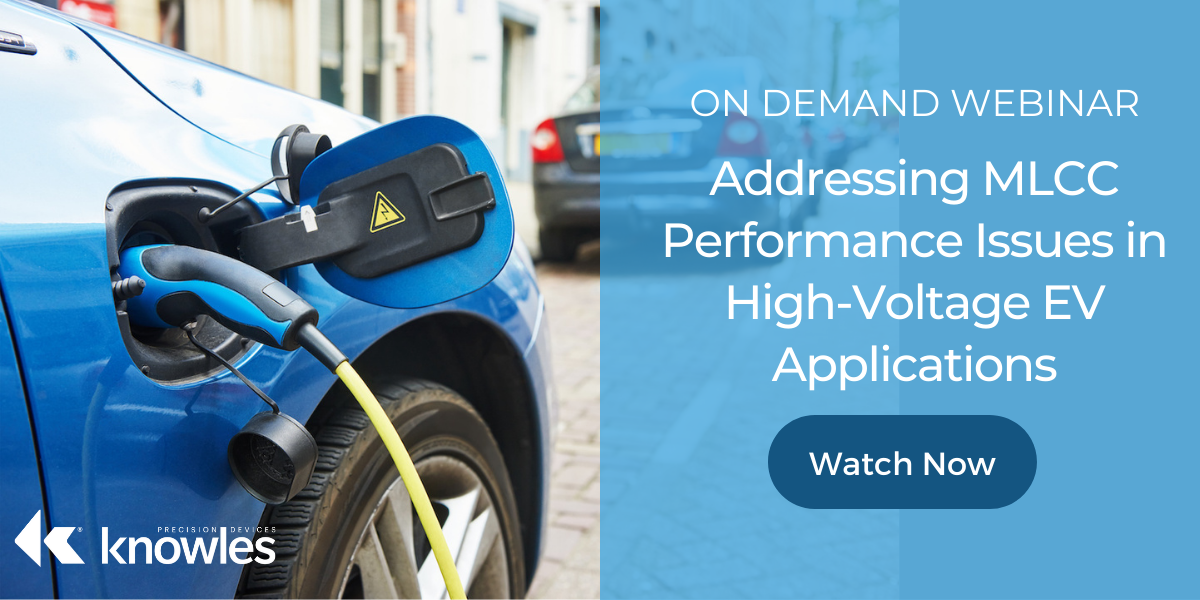
In recent years, multilayer ceramic capacitors (MLCCs) have emerged as an excellent capacitor option for the high-power electrical systems needed in electric vehicle (EVs) due to their small physical size, low inductance, and ability to operate at higher temperatures. However, EV engineers are facing two big challenges with using MLCCs including DC bias that can cause capacitance loses of 80 to 90 percent of their quoted value and self-heating issues from AC ripple that can lead to inefficiencies in circuits as well as increased cooling demands.
These MLCC performance issues related to capacitance loss from DC bias and self-heating due to AC ripple are currently hot topics for electrical engineers working on EVs. This is largely because EV battery system efficiency can be greatly improved if capacitance loss and self-heating issues are eliminated. Not only is battery and charging efficiency important to consumers, but from an engineering perspective, if the battery can run cooler, the number of parts needed to cool the system can be reduced, lowering the weight of the vehicle. And, anytime weight is brought down, aerodynamic drag is reduced and less energy is needed to drive the vehicle, inherently increasing the vehicle’s range.
![]()
On-Demand Webinar: The Importance of High Reliability for Medical Implantable Devices
06 Januari 2021

If you are a medical device engineer working to improve the longevity for implantable devices such as pacemakers, defibrillators, insulin pumps, cochlear devices, or bladder stimulators, be sure to checkout our latest on-demand webinar
In this webinar, we start by exploring the basics of capacitor functionality inside an implantable medical device. We then look at how the demand to increase capacitance in these devices in a safe way can be done using multilayer ceramic capacitors (MLCCs). We also explore some of the benefits and considerations of using high-reliability MLCCs as opposed to standard MLCCs in medical implantable devices. We wrap-up the webinar by walking through the specifications and requirements for performing high reliability testing of the capacitors used in these devices.
![]()
Expanding Our Filter Technology Offerings to Serve Low-Frequency Applications
16 December 2021
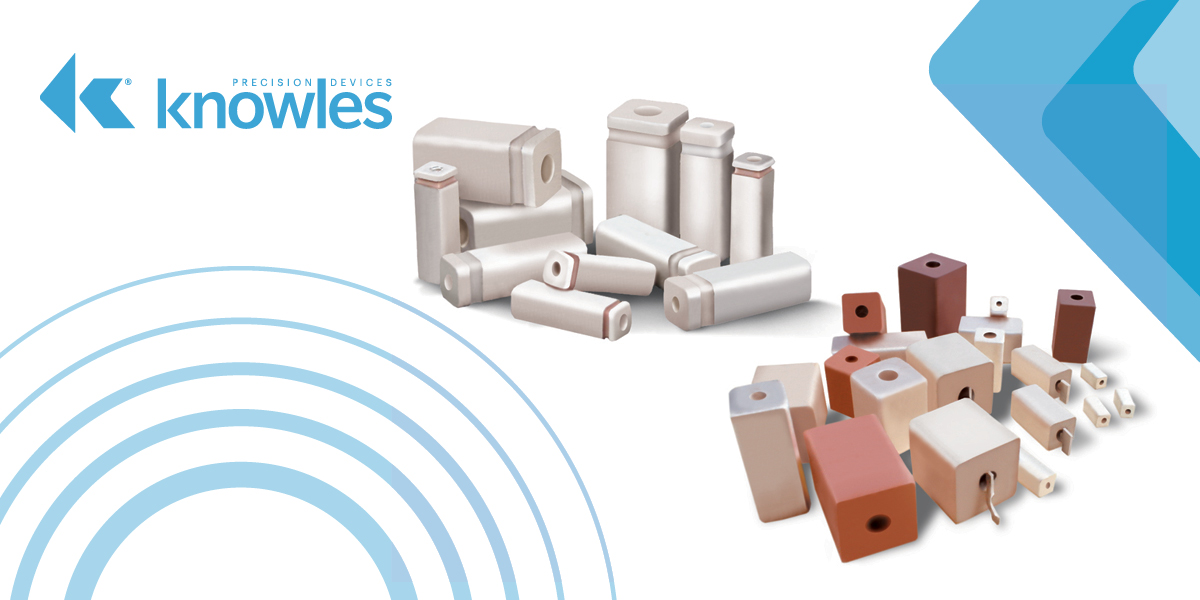
This year, Knowles Precision Devices acquired Integrated Microwave Corporation (IMC), a leader in the design and manufacture of custom precision RF microwave filters and multiplexers for the aerospace, defense, and communications industries. This acquisition was particularly exciting as our two companies share deep expertise in engineering high-performance ceramics for RF and microwave applications. And, like Knowles Precision Devices, IMC also has a long heritage of supplying highly reliable components for mission critical space devices that includes applications such as the MARS Orbiters, MARS Landers, and MARS Rovers.
While our business goals and target application areas are nicely aligned, the acquisition of IMC also helps us expand our offerings to serve applications operating in the lower portion of the frequency range from the VHF to the L band. While we have always offered RF and microwave products that excel at filtering in applications operating from the S to the Ka band, now we have a complete range of RF and microwave filtering solutions that support applications from the VHF to the Ka band.
![]()
New Low Loss, Ultra Stable High-Capacitance MLCCs for Power Electronics
07 December 2021
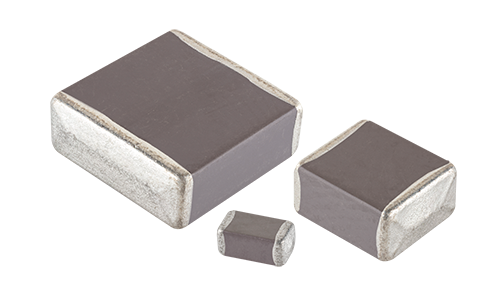
Many power electronics today are being designed for use in high-temperature, high-voltage environments, such as inside electric vehicles (EVs). However, size, weight, and power (SWaP) are also key factors driving electronic product development. These conflicting design criteria are an issue for many electrical engineers because space is not available to simply add a cooling system, as this will add weight and increase the product’s overall footprint. Therefore, many of these electronic components are susceptible to “running hot” at the high temperatures and high voltages used in these tiny spaces.
At Knowles Precision Devices, we thought we could balance these two conflicting demands through dielectric material innovation. And we were right. With our newest line of multilayer ceramic capacitors (MLCCs) built with Hiteca™, we can deliver high capacitance stability over high temperature and voltage as well as lower parasitic losses under common operating conditions.
![]()
Simplify Capacitor Dielectric Selection by Understanding Dielectric Coding Methods
28 October 2021

When designing a ceramic capacitor, the type of dielectric used will influence the characteristics of the capacitor and define its electrical behavior. At a high level, there are two types of dielectrics made with ceramics – paraelectric and ferroelectric. Dielectrics containing paraelectric (or non-ferroelectric) ceramics are known as Class I dielectrics. These dielectrics show a linear relationship of polarization to voltage and are formulated to have a linear temperature coefficient. Capacitors using a Class I dielectric have high stability across various temperatures, but have low permittivity, which means the capacitor will offer low capacitance.
Dielectrics that contain ferroelectric ceramics are known as Class II dielectrics. These dielectrics provide a much higher permittivity, but the capacitance value is much less consistent over the temperature range. Class II dielectrics offer much higher dielectric constants than Class I dielectrics, but have less stable properties with regards to temperature, voltage, frequency, and time.
![]()
A Custom Approach to Large Capacitor Assembly
22 October 2021
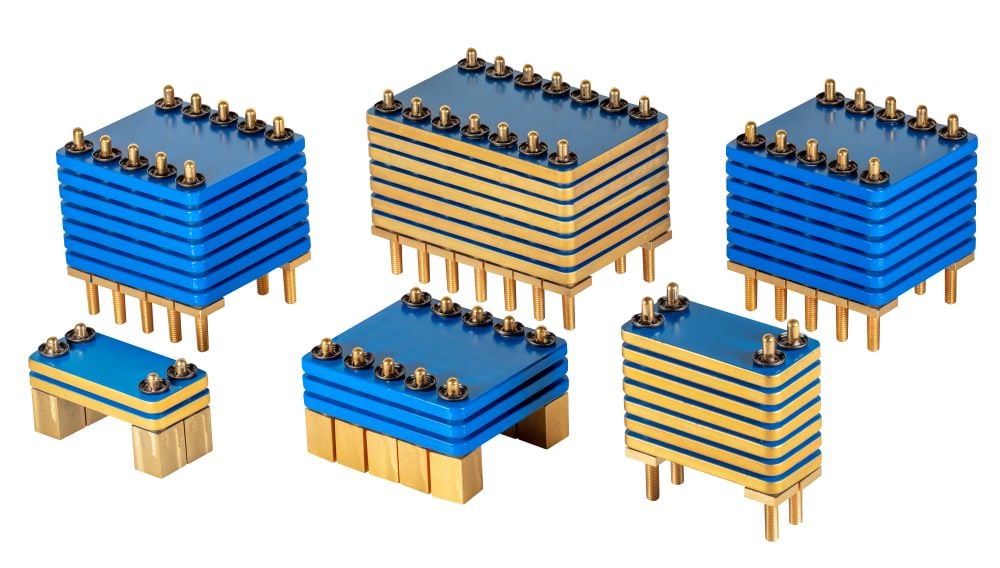
Achieving high capacitance means going big. But how do you do that while still maximizing board space? At Knowles Precision Devices, we’ve developed a new method for building customizable large capacitor assemblies that capitalize on the vertical space above the circuit board. While stacked capacitor assemblies have been around for many years, these parts do not have very good bump and vibration withstand due to the thin leads used in their construction. These new assemblies from Knowles Precision Devices offer a ruggedized construction capable of withstanding high levels of shock and vibration. This offers a unique combination of capability, durability, high capacitance, and very high voltage in a smaller area, making these capacitors ideal for automotive, military, and aerospace applications.
Our large capacitor assemblies are highly customizable both in height and shape and are built with reliability in mind. For these assemblies, we use large diameter pins that can handle high ripple currents and contact to the internal electrodes through a 360º connection, reducing resistive and inductive losses. The pins are mechanically decoupled from ceramic elements, allowing the assembly to withstand severe mechanical shock, vibration, and temperature variations. We also use a low-loss, ultra-stable C0G dielectric and have a high capacitance range of 10nF to 3.9µF and a voltage range from 500Vdc to 5000Vdc. These capacitor assemblies have also been through a variety of qualification tests as shown in Table 1 to demonstrate their capability.
![]()
Managing High-Temperature Electronics Environments Down to the Component Level
22 October 2021

As complex electronic systems become more prevalent in our daily lives, the demand for high-temperature, high-reliability components continues to increase. Standard electronic components have an operating temperature of -55 °C to 125 °C, but the number of applications requiring functionality above 125 °C is growing. Components in these applications, like capacitors, must maintain their functionality and take the heat (literally and figuratively) while powered. To meet the brief, material and design of these high-temperature components must deviate from today’s standard.
Initially, applications like down-hole oil and gas drilling were better known for having high-temperature component needs. Down-hole operations require drilling several kilometers into the earth’s surface with working conditions exceeding 200 °C. The deeper the drilling operation, the more resilient components need to be. If components can’t reliably perform under high temperatures, it’s very difficult to repair or replace a failed component when operations are in progress deep underground. This kind of interruption could cause work to halt, leading to significant financial loss.
![]()
Webinar: High-Reliability MLCCs for Medical Implantable Applications
22 October 2021
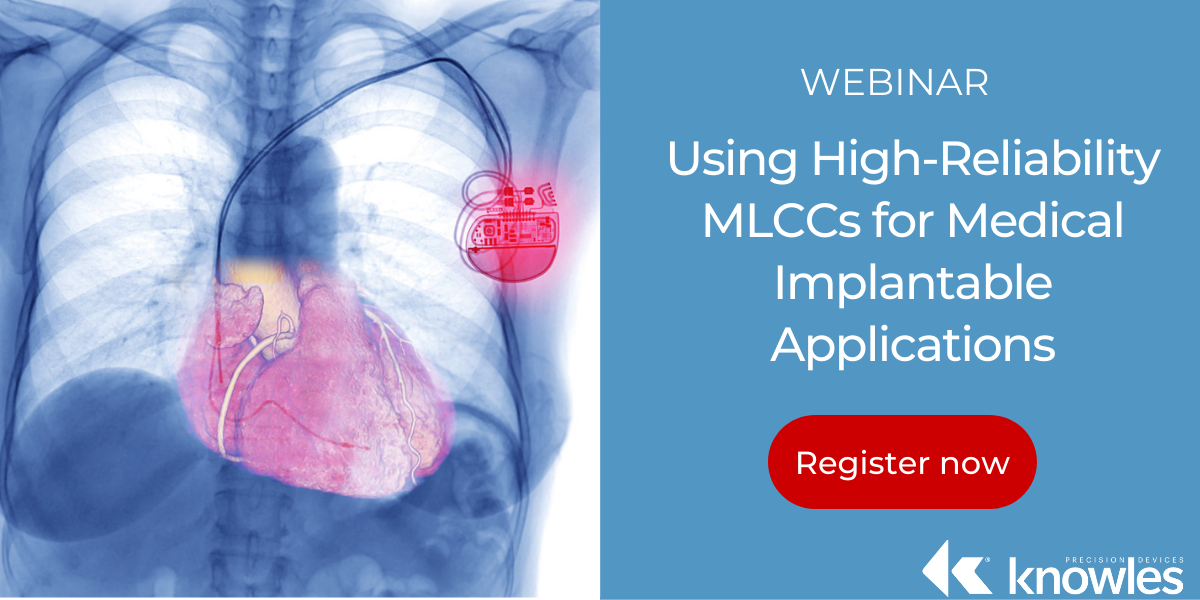
When it comes to implantable medical devices, the cost of failure is extremely high, both in terms of monetary costs and potential human risks. Therefore, ensuring high reliability for all parts, including electronic components required for medical devices, is critical. Capacitors are one of the many components that need to meet these reliability demands.
In this webinar, we will start by providing an overview of the role of a capacitor in a circuit as well as the considerations and benefits of using multi-layer ceramic capacitors (MLCCs) in medical implantable devices. We will also cover the details on the requirements and standards medical grade capacitors need to be built to as well as the specific testing requirements and failure modes of these components.
![]()
Webinar: RF Components in Emerging SATCOM Applications
8 October 2021

In recent years, the focus for satellite communication (SATCOM) applications has shifted from coverage to capacity. As a result, SATCOM devices are being pushed to operate at higher bandwidths in the Ka, V, and E bands. At the same time, these devices need to be made increasingly smaller, which means smallsats, or satellites weighing less than 500 kg, are quickly gaining momentum, making size, weight, and power (SWaP) critical design considerations as well.
During this webinar, we touch on several trends in SATCOM design today as well as the key technologies helping SATCOM design engineers balance bandwidth and size requirements. We start by providing a brief overview of why more bandwidth is key to achieving the incredibly fast data rates desired today. We then explore the impacts of operating at higher frequencies in the Ka and E bands to increase bandwidth. At these higher bandwidths, directivity and gain are increased, there is more spectrum available in general, and antenna size is decreased, which all together help SATCOM designers increase data rates while reducing device size.
![]()
Solving Tough Technical Challenges Through Agility and Experience
9 September 2021
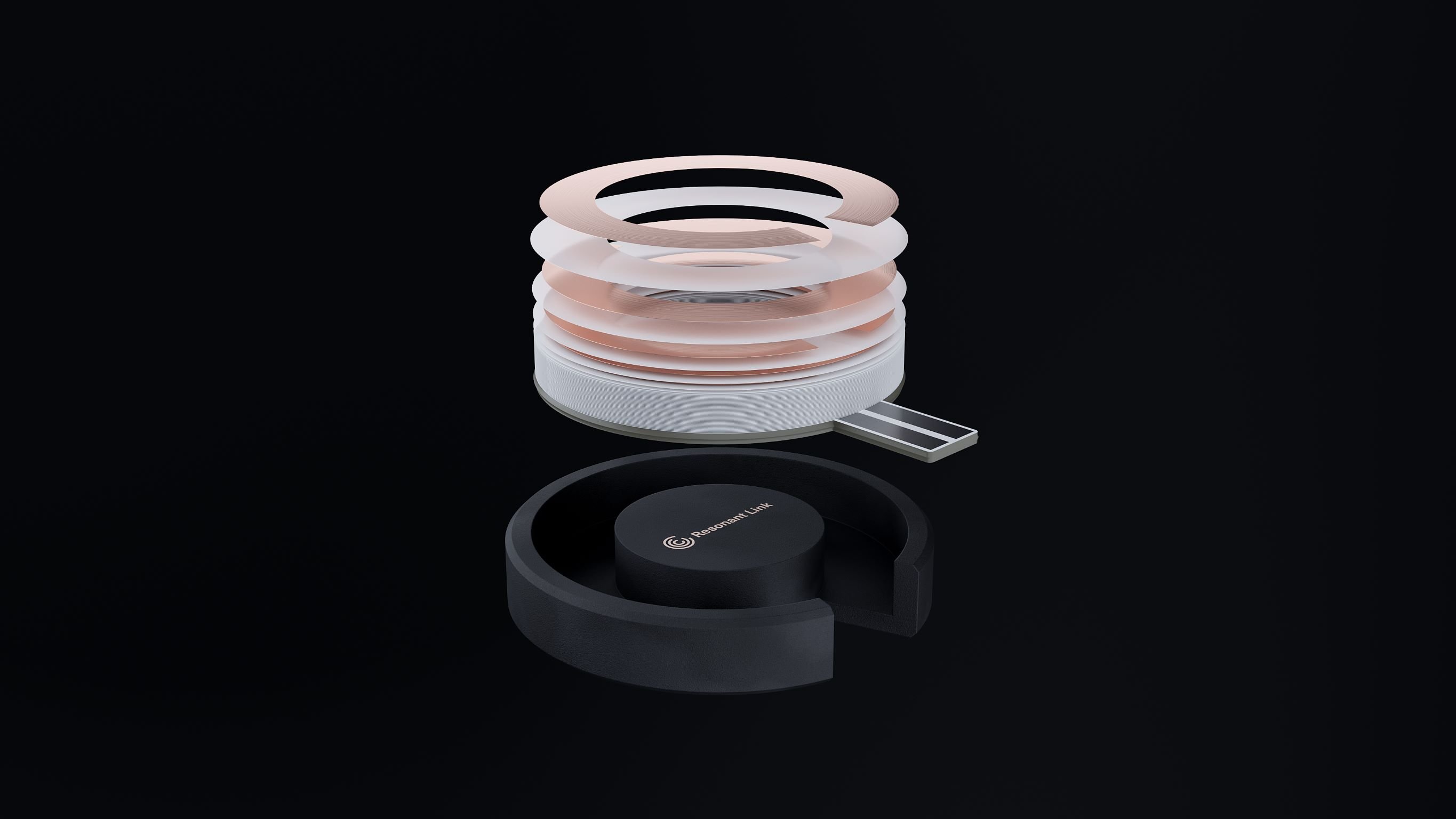
At Knowles Precision Devices, we thrive on working with companies who want to take technically challenging ideas and work through the details to figure out how to turn their seemingly impossible ideas into reality. This is because we are not limited to volume production and have extensive experience making specialty and custom parts. We are also familiar with the challenges associated with delivering high-reliability components as we supply many industries and applications that depend on the consistent functionality of custom-shaped parts. For example, we provide numerous space grade components and we are the only manufacturer who has developed planar array ceramic parts for the International Space Station.
In addition, we have a long heritage providing a variety of components to medical device manufacturers for both implantable devices and test equipment. We also specialize in creating higher voltage capacitors and continue to increase the voltages we can work at while most of our competitors specialize in low voltages and continue to focus on even lower voltage parts. Therefore, when Resonant Link approached us to develop uniquely shaped, highly efficient windings with low equivalent series resistance (ESR) and high-quality factor (Q) for wireless charging, we were excited about the opportunity. Even though we knew nothing existed that could satisfy all these requirements, we did what many companies would not have the ability to do – we began discussing options with different sites within our organization to figure out a solution. Because we are an agile company, as we discussed our ideas, we landed on a solution that would take best practices from two of the co-existing technologies we specialize in – our planar line and our chip line – to produce this custom part.
![]()
White Paper Knowles Medical
31 August 2021

Capacitors are one of the many components that contribute to the overall longevity of an implantable medical device; making a small component change could extend its reliability, and even its lifespan, by preventing battery related complications. Here we begin to explore the cost of device failures and how proper reliability testing and supplier considerations can help you navigate capacitor sourcing for your medical device application.
Advances in medical devices and medical implantables continue to improve patient outcomes in a range of applications from pace makers to pain management. Building and designing health solutions that stay in step with innovation takes dedication from research and development, regulatory and operations among others. nWhen applying the business lens, balancing value and reliability is a constant consideration. Patient safety is paramount; however, making effective cost decisions becomes increasingly complex when other factors are on the line. When implantable devices fail, everyone pays a price—including patients.
![]()
Making a Reduced Form Factor, High-Performance Switch Filter Bank a Reality
19 August 2021
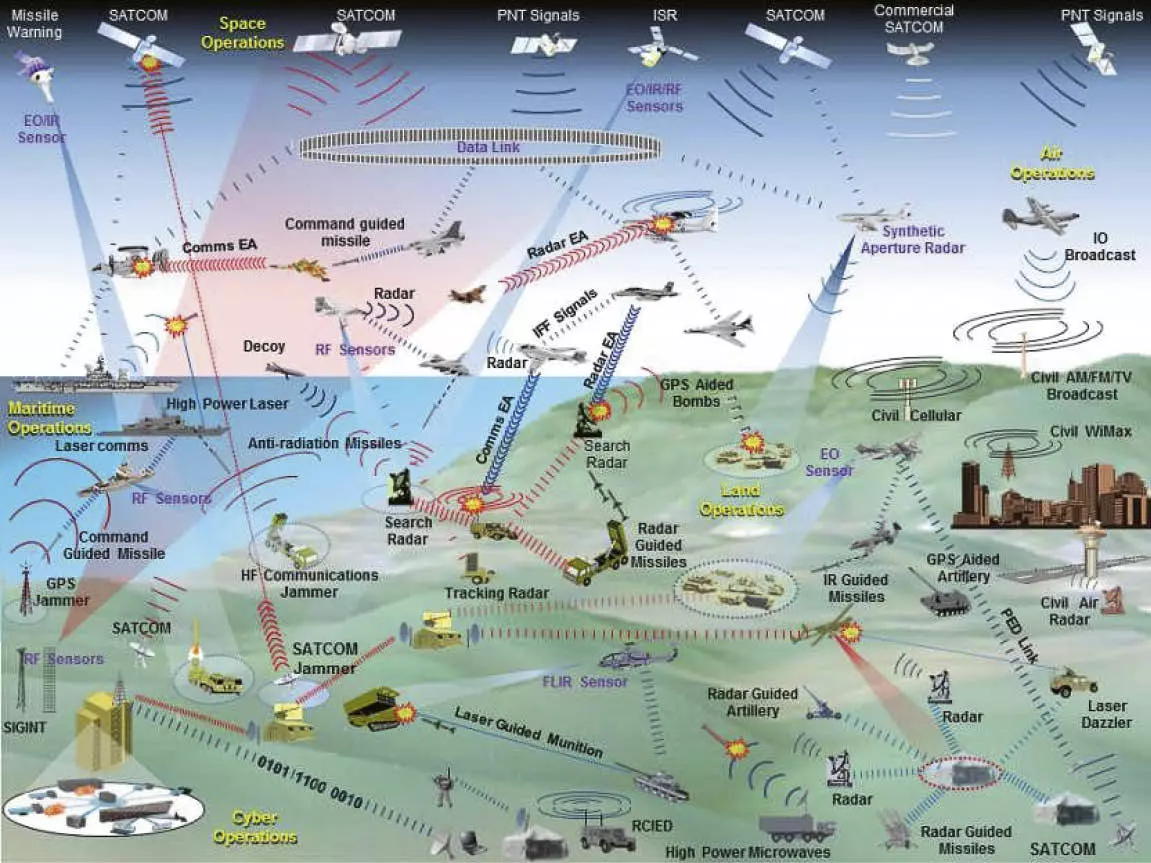
Many critical military operations around the world are increasingly relying on a variety of electronic warfare devices for a range of threat suppression, detection, and neutralization activities. This means that numerous devices operating across the RF spectrum including low-frequency devices in the VHF band and mmWave devices in the Ka band are necessary. As shown in Figure 1, when many electronic warfare devices are in use, a large number of signals are being sent and received and crossing paths. Therefore, it’s easy for any one of these devices to experience issues with interference if proper filtering techniques are not in place.
To further complicate this scenario, many military applications today need to be used in increasingly smaller spaces such as unmanned platforms, aircrafts, ships, or tanks, making size, weight, and power (SWaP) a big concern. Thus, to filter out unwanted signals in a crowded RF environment, more components cannot simply be added to a device to get the job done. Instead, the ideal solution to this complex filtering issue would be a compact, lightweight wideband tuner architecture with the ability to intelligently acquire and filter signals from a wide number of bands. However, developing this type of component presents quite a few challenges.
![]()
A Comprehensive Guide to Our Build-to-Print Services and Thin-Film Technology
12 August 2021

At Knowles Precision Devices, we are not trying to be your typical commodity component manufacturer. We want to do things that are hard and help customers solve their most difficult engineering challenges. This is why over the past three decades we have focused on manufacturing high-frequency, high Q components that can function reliably, even in the most demanding applications. Additionally, since every application has different needs, we offer a wide-variety of off-the-shelf catalog solutions, build-to-print services, and even the ability to work closely with customers to create custom thin-film solutions.
The marriage of ceramic expertise, manufacturing know-how, product quality, customer service, product customization, and clever microwave and RF design engineering allows us to offer this variety, while many of our competitors cannot. To provide a better understanding of our build-to-print services in general and the breadth of our offerings, as well as how our thin-film technology can benefit your applications, we’ve put together this Build-to-Print Basics ebook.
![]()
Build-to-Print Basics Part 15: Military and Space Grade Applications
12 August 2021
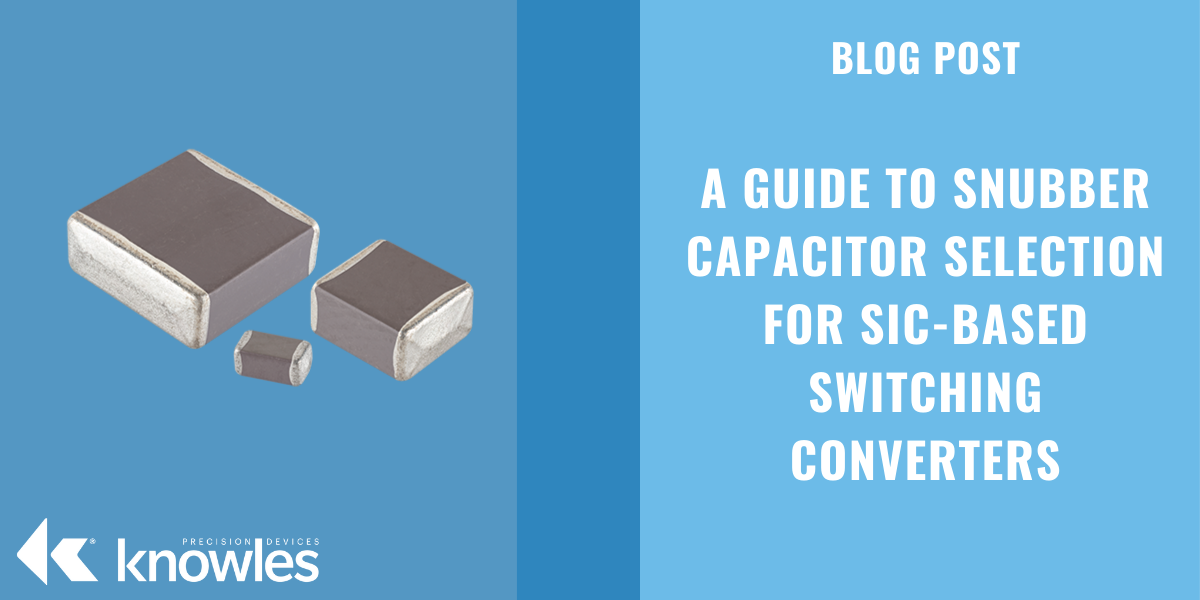
To provide a better understanding of build-to-print in general and the breadth of our offerings, as well as how our thin-film technology can benefit your applications, we’ve put together a Build-to-Print Basics series. In this final post of our Build-to-Print Basics series, we discuss the quality standards we follow to ensure our components are qualified for military and space grade applications as well as the additional testing or spec design we can perform as needed by our customers.
At Knowles Precision Devices, we know it takes high-quality and high-reliability electronic components to meet the rigorous standards required for military and space applications. After all, when launching expensive mission-critical equipment into space or using highly sophisticated electronic warfare devices to protect your citizens, there is no room for failure. Therefore, we build all our components, including those we develop for build-to-print customers, to MIL-STD-883, a standard that “establishes uniform methods, controls, and procedures for testing microelectronic devices suitable for use within military and aerospace electronic systems.”
![]()
Watch Our Menlo Micro Switch Summit Presentation Today
12 August 2021

During the first-ever virtual Menlo Micro Switch Summit, Knowles Precision Devices joined John Richardson, founder and president of X-Microwave, and Tom Clickenbeard, applications engineer at Menlo Microsystems, to give a presentation on Prototyping Using X-Microwave’s XM-Blocks with Knowles Precision Devices RF Filters and MEMS Switches.
During the presentation, Richardson first provides an overview of X-Microwave’s modular platform for designing and producing high-performance RF and microwave systems. He also touches on how Knowles Precision Devices’ thin-film RF filters can be used with the X-Microwave platform. Then, Clickenbeard provides a brief demo of the performance obtained using the X-Microwave prototyping station, our bandpass filters, and Menlo Microsystems switches to make a 4-chanel filter bank. Finally, we wrap up the presentation by looking at an application-specific use case for this type of technology by discussing considerations for switch filter banks and the shift to using fully digital beamforming in phased arrays for electronic warfare applications.
![]()
Fully Digital Beamforming – An Excellent Option for Emerging Military Applications

As early adopters of beamforming technology in the 1960s, aerospace and defense organizations have a lot of experience using the initial large-scale active electronically scanned arrays (AESAs) for military radar tracking applications. But these arrays aren’t as convenient for some applications today as the operational frequencies of the targets of interest for many military applications are increasing. This means the wavelengths of the signals that need to be monitored are getting shorter and these radar applications need denser arrays since antenna spacing needs to be set at one half the wavelength. For example, at 25GHz, the wavelength in free space is approximately 12mm (0.47”), leading to half-wave spacing for antennas of 6mm (0.24”). Also, as arrays become denser, the new challenge for RF system designers is avoiding interference in these tighter spaces, especially when transmitting signals.
Therefore, there are a number of benefits that fully digital beamforming can potentially bring to many emerging military applications – especially those in the electronic warfare space. First, at a high level, fully digital beamforming has a dedicated analog-to-digital converter (ADC) for every antenna element. The allows the array to simultaneously acquire and transmit multiple beams, and beams can be split in various directions at the same time without having interference issues and all while improving dynamic range.
![]()
Build-to-Print Basics Part 14: Testing
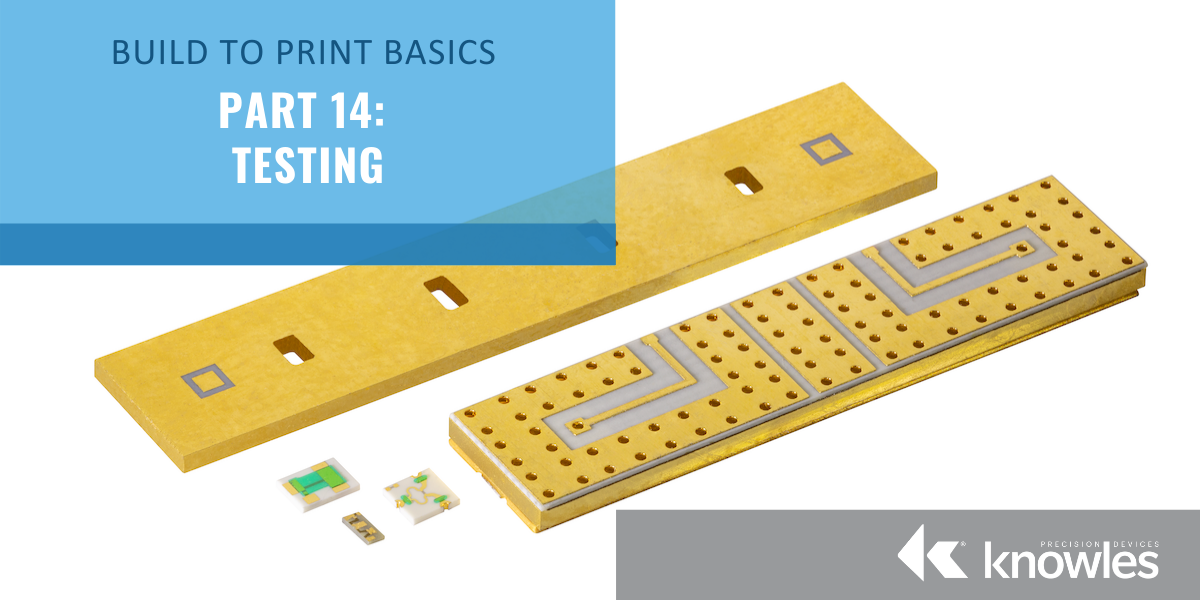
To provide a better understanding of build-to-print in general and the breadth of our offerings, as well as how our thin-film technology can benefit your applications, we’ve put together a Build-to-Print Basics series. In part 14 we discuss a range of non-standard testing services our facilities can provide when needed by our build-to-print customers.
Therefore, these receivers need to operate across an extremely wide range of bandwidths to pick up and understand signals anywhere from 300MHz to 20GHz and beyond. However, a basic general wideband antenna isn’t sufficient for these applications because selectivity is needed to determine what you are actually listening to.While any testing beyond validation testing is not a standard practice for build-to-print, since we also offer build-to-spec and custom design services in-house, our engineers are well equipped to perform a wide range of tests on our build-to-print products if needed by a customer. From basic quality tests to qualification testing to classified tests some government contractors need to comply with DD254, we offer a wide range of testing capabilities that many of our competitors cannot provide.
![]()
Webinar: Addressing Filtering Challenges in Digital Broadband Receivers for Electronic Warfare Applications
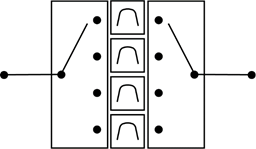
Today, electronic warfare applications need to detect a wide variety of signals ranging from UHF communications to GPS and other data signals in the L band to high-frequency radar signals that can fall in the X, S, or K bands.
Therefore, these receivers need to operate across an extremely wide range of bandwidths to pick up and understand signals anywhere from 300MHz to 20GHz and beyond. However, a basic general wideband antenna isn’t sufficient for these applications because selectivity is needed to determine what you are actually listening to.
Additionally, as if the task of designing an ultra-wideband receiver with selectivity wasn’t challenging enough, RF designers are simultaneously facing pressure to reduce the size, weight, and power (SWaP) of these applications as well.
![]()
Detonation Capacitors and EFI

Explosives are dangerous by design. For applications involving detonation, like munition and down-hole exploration, explosives should be built to avoid unintentional or premature detonation caused by any rise in temperature or shock. These applications require a number of specialty components including capacitors that discharge high energy at temperatures up to 200°C.
Typically, detonation capacitors initiate an explosion by delivering a pulse of energy that’s previously charged up and stored in the ceramic field between the capacitor plates. Then, the stored energy is released through the electrodes. Pulse energy capacitors are built specifically to handle reliable operation under single or multiple pulse conditions. They employ a method of detonation that requires firing into exploding foil initiators (EFI) to avoid premature explosion.
![]()
Build-to-Print Basics Part 13: Bias Networks
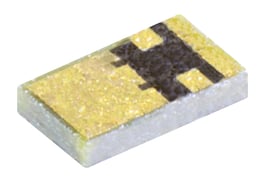
To provide a better understanding of build-to-print in general and the breadth of our offerings, as well as how our thin-film technology can benefit your applications, we’ve put together a Build-to-Print Basics series. In part 13 we provide an overview of how we use our build-to-print process and thin-film expertise to develop bias networks that support the functionality of active microwave components while also minimizing the space needed in a circuit for certain components and simplifying circuit assembly.
In our previous post in this series, we discussed a variety of passive microwave components, or integrated passive devices (IPDs), that we can design and develop as part of our build-to-print services. In this post, we expand on this with the details of a type of IPD, the bias network, that is commonly made with thin-film processes but used to support active microwave components such as amplifiers. To start at the beginning, as you likely know, biasing is the process of getting DC voltage from point A to point B in the most appropriate way in a circuit. A bias network assists with this by combining capacitors and resistors in a specified way to best meet the specific needs of the device where the circuit will be used. To make a bias network, the necessary components are fabricated on the same substrate. This means that this section of the circuit can be ‘abstracted’ out as a single component, which saves on space and assembly cost.
![]()
Visit Knowles Precision Devices at IMS 2021 In-Person or Virtually

Whether you’re stopping by the International Microwave Symposium (IMS) in person at the Georgia World Congress Center in Atlanta this week, or preparing to attend virtually from June 20 – 25, you can join the team at Knowles Precision Devices for some exciting information and presentations.
At the in-person conference you can find us exhibiting at booth 1913, while during the virtual show we will have members of our team available at our virtual booth at all times. At our booths we will showcase our high-performance, high-frequency components for industries such as aerospace and defense where reliability is key. We will also demonstrate the capabilities of some of our latest products such as the 100nF V80 Bypass Capacitor – a revolutionary capacitor for the industry as it is the first single-layer capacitor to feature an operating voltage of 50V in .084” x .042” package.
![]()
Your Quick Guide to Trimmer Capacitor Selection – Part 2
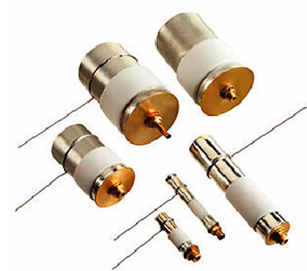
In part 1 of this two-part guide, we talked about the trade-offs you need to make when selecting the type of capacitor that will be the best fit for your application and the basics of trimmer capacitor design including dielectric material options. This second post focuses more on the details of trimmer capacitor specs and how to determine what’s right for your application.
Once you have decided a trimmer capacitor is a good fit for your application, there are numerous additional decisions to make. In addition to the many dielectric options, trimmer capacitors are also available in numerous package styles, including those designed for PCB mounting, panel mounting, and surface-mount applications. Trimmer capacitors are even available for low-temperature applications in cryogenic systems and manufactured without magnetic materials for use in critical industrial and medical applications such as MRI systems.
![]()
Overcoming EMI in Electric Vehicle Applications
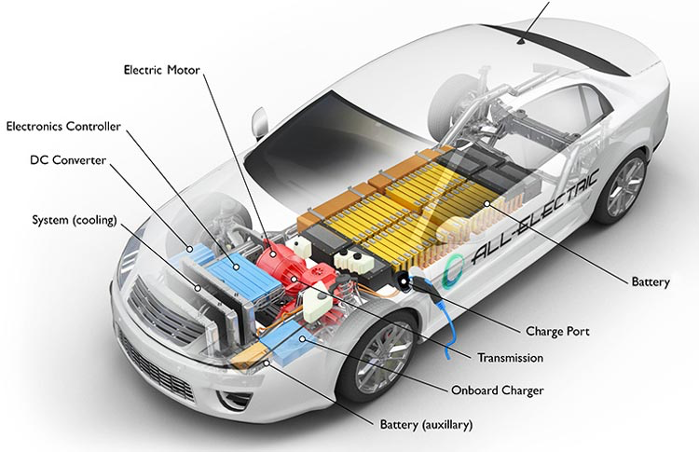
According to the U.S. Bureau of Transportation Statistics, 2020 was the fifth consecutive year of growth in electric vehicle (EV) sales, and the demand is growing. Based on the first quarter numbers, the Bureau anticipates 2021 sales are on a path to surpass last year’s.
As production ramps up, it’s clear that EVs present a number of unique challenges, including greater susceptibility to electromagnetic interference (EMI). EVs employ high-power electronics to operate the electrical engine, producing high-level, low-frequency EMI. Interference is a common problem across electronics applications, but when we consider EV applications, where safety, efficiency, and performance rely on electronics, high levels of EMI could cause dangerous complications.
![]()
Your Quick Guide to Trimmer Capacitor Selection – Part 1
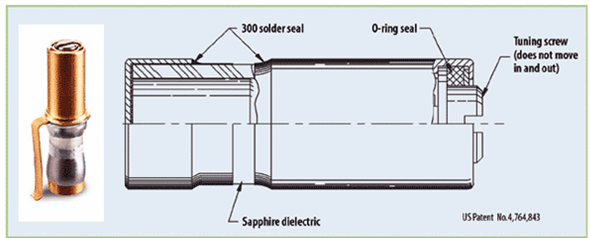
As you already know, capacitors are essential circuit elements for storing and suppling charge on demand. For inductors and resistors, capacitors act as the building blocks of passive circuits and the supporting components for active circuits. While a wide range of fixed-value capacitors are used in most electrical circuits, it is sometimes preferable, or necessary, to use a component with a variable capacitance range.
These variable capacitors are known as trimmer capacitors because these capacitors can be used to trim the performance of both active and passive circuits. These components allow for variable tuning – think oscillator frequency values or rise and fall times. Additionally, if values drift over the life of a device, trimmer capacitors can be recalibrated as needed. For sensitive applications like magnetic resonance imaging (MRI), these components help optimize performance where any instability in time or temperature could impact the image output.
![]()
Join Us Virtually at The Battery Show Europe 2021

Join Knowles Precision Devices and many members of the advanced battery and EV/HEV community from May 18 – 20 at this year’s virtual edition of The Battery Show Europe. Since this year’s show has been designed to virtually recreate the tradeshow experience from the comfort and safety of your own home or office, we will be exhibiting a variety of our advanced battery technology at virtual booth 8-351.
At our booth, you can learn more about the numerous high-reliability components we design and develop for use even in the harshest EV/HEV environments. This includes a range of multi-layer ceramic capacitors (MLCCs) and surface-mount EMI filters that are qualified to the AEC-Q200 rev D standards, do not require additional component-level qualification testing, and are approved for a voltage rating of 4kV.
![]()
Build-to-Print Basics Part 12: Custom Microwave Components
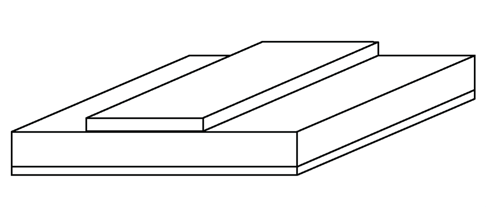
To provide a better understanding of build-to-print in general and the breadth of our offerings, as well as how our thin-film technology can benefit your applications, we’ve put together a Build-to-Print Basics series. In part 12, we tie everything we’ve discussed so far together and provide more specifics about how we use the processes and options detailed throughout this series to create the custom microwave components you need.
Throughout this series, we’ve talked a lot about the processes we follow and options we make available to our customers – from substrate selection to via designs – through our build-to-print process. While it’s clear we can customize basically every part of a circuit, you may be wondering, what components or devices can we actually design and develop for customers using these processes and our expertise? Let’s explore the possibilities in this post.

